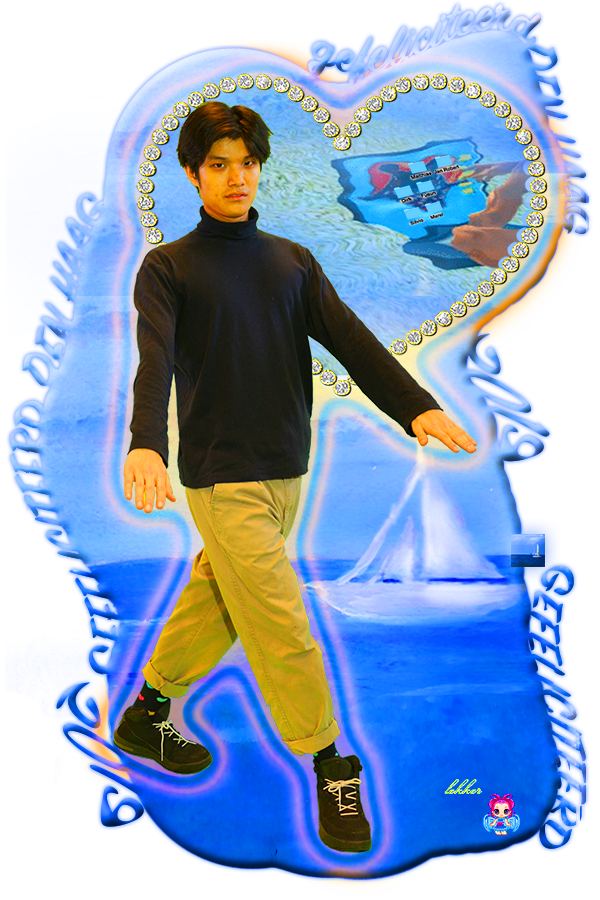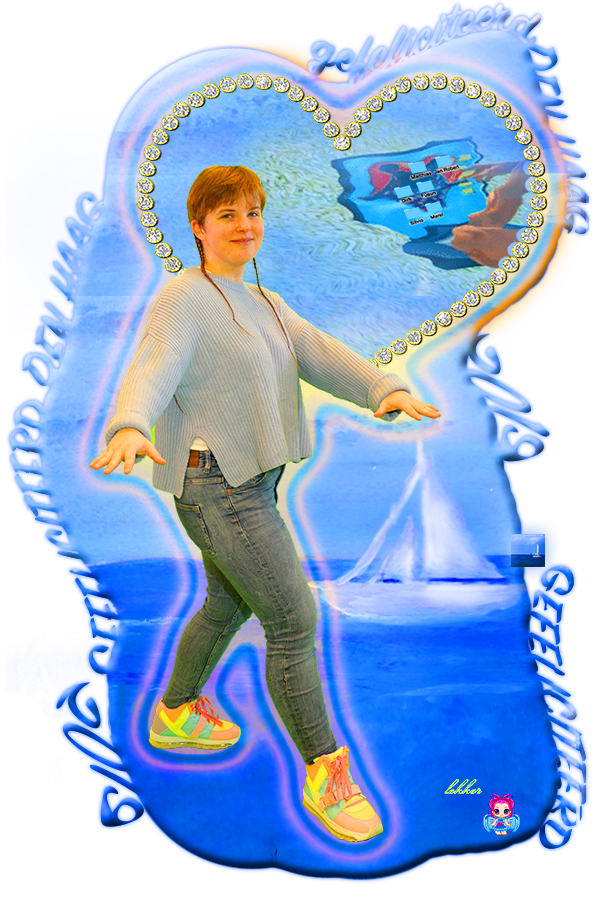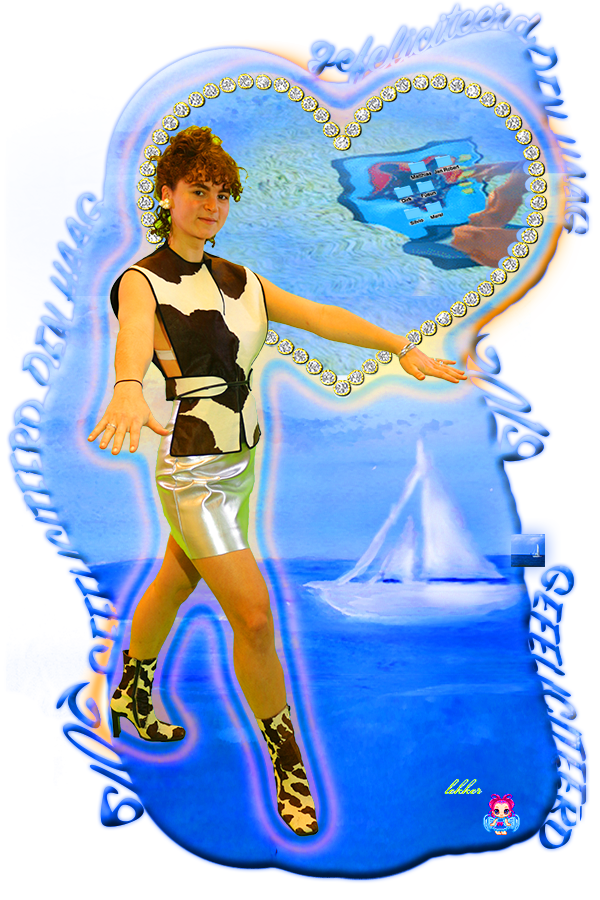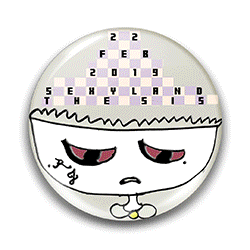
Rebecca Joly


I made myself a hairy child!"
In 4 years I'll have the same age my mother had when I destroyed her pussy
In my life,
I could have been like Britney"
In my life,
I could have been like Britney, I could have fought like Dahomey warriors, I could have hunted like ‘Lucy’, I could have been a Venus, I could have looked at my “grandchidren openning up like flowers, never getting tired of watching them grow”, I could have been ‘Plastic’, I could have built myself a Kim Kardashian booty, I could have ‘hurtled down a perfect green valley of happiness’, I could have been a Baby Doll, a Lolita, an icone, a Marilyn, a Queen wrapped in a red/cupcake/carpet dress, I could have been a Sexy Secret Agent, I could have been a Super-model...
I could have done what my mother and grand-mothers did: I could have started a ‘New beginning’. And everything would have been ok...But I’m not
Why give up what is ‘set’, what is meant to be... Why do I feel the need to turn away from it?
Why do I want to overanalyse everything? -Surrender.
It doesn’t feel right...
Why always reconsidering things...asking questions. -Like little accidents...little strokes... It’s like a little voice in my head, that is here, that gives me like a ‘Tinguely’ feeling.
Like a little voice that I thought lost but came back. ‘Wonder how old is the voice, and why it’s back?
How can I make you understand: the persistence of the voice, the reasons I shouldn’t listen to it when it’s actually the only thing I feel like doing.
I will try to explain, while you will follow the story of my ‘Why’s and my ‘could have been’s. I will tell you the story of a Girl, now Woman, on the way to her Becoming...
Click Here for more
I could have been like Britney, I could have fought like Dahomey warriors, I could have hunted like ‘Lucy’, I could have been a Venus, I could have looked at my “grandchidren openning up like flowers, never getting tired of watching them grow”, I could have been ‘Plastic’, I could have built myself a Kim Kardashian booty, I could have ‘hurtled down a perfect green valley of happiness’, I could have been a Baby Doll, a Lolita, an icone, a Marilyn, a Queen wrapped in a red/cupcake/carpet dress, I could have been a Sexy Secret Agent, I could have been a Super-model...
I could have done what my mother and grand-mothers did: I could have started a ‘New beginning’. And everything would have been ok...But I’m not
Why give up what is ‘set’, what is meant to be... Why do I feel the need to turn away from it?
Why do I want to overanalyse everything? -Surrender.
It doesn’t feel right...
Why always reconsidering things...asking questions. -Like little accidents...little strokes... It’s like a little voice in my head, that is here, that gives me like a ‘Tinguely’ feeling.
Like a little voice that I thought lost but came back. ‘Wonder how old is the voice, and why it’s back?
How can I make you understand: the persistence of the voice, the reasons I shouldn’t listen to it when it’s actually the only thing I feel like doing.
I will try to explain, while you will follow the story of my ‘Why’s and my ‘could have been’s. I will tell you the story of a Girl, now Woman, on the way to her Becoming...
Click Here for more


Samuel Rynearson
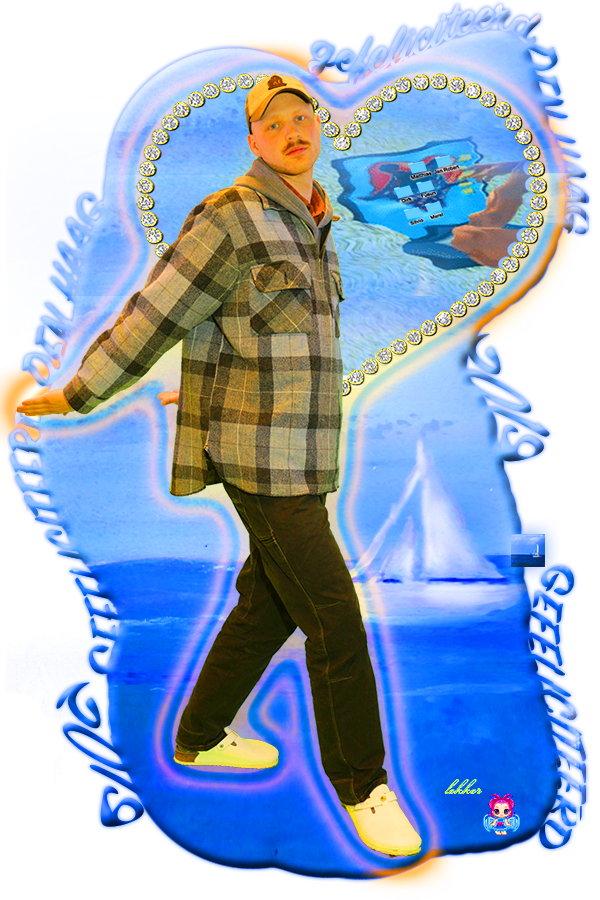

It Just Feels Right
It Just Feels Right
It Just Feels Right
It Just Feels Right
This thesis is an exploration which started me stumbling across the handaxe. The handaxe is a stone tool many believe it to be our species first designed object. Its most recognized shape is a symmetrical bifacial teardrop, archeologists have theorized how exactly they came to be this shape; everything from genetics to and object which aids sexual selection. I am loosely looking in to the phrase “it just feels right” uttered by Chan Karunamuni at Apple’s 2018 Designing Fluid Interfaces presentation while an iPhone X and a handaxe sat projected side by side behind him. What is it for something to just feel right to us and how does that play in to our relationship with the things we create?
Click Here for more
Click Here for more


Rhodé Tavenier
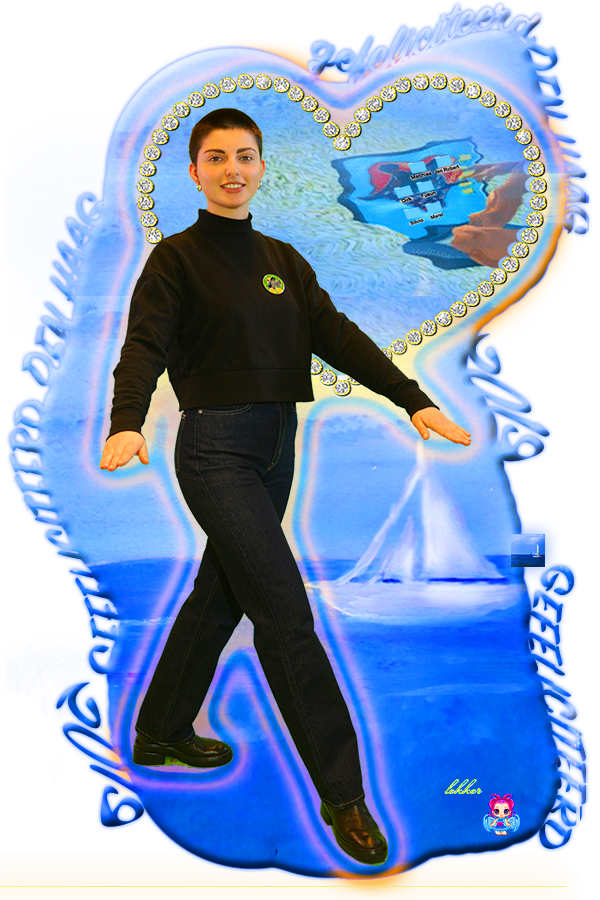

Fluisterend Plakwerk
Een ode aan het plakwerk zonder scheurrand.
Fluisterend Plakwerk
Een ode aan het plakwerk zonder scheurrand.
My field of interest is the concept of collage. This means the technique of an assemblage of elements taken from different contexts, creating a new meaning within a new whole. I want to explore this subject because itʼs a technique thatʼs intuitively within my way of thinking and working. During my internship at the Verbeke Foundation I discovered how the word collage can for some mean a way of life instead of (just) a form of art. Later in my research I discovered how thereʼs a cliché image and idea we have which arises when hearing the word collage. Therefore I became interest in the idea of a more non-obvious, less logical and almost invisble form of collage
I want to shine a light on the meaning of collage in a broader, for me more essential sense. by breaking down the steps of the proceidure and the essential characteristics. I will dive into the possibilities of the non-obvious surprising forms of collage. I will explore the answers on those questions by going into dialogue with different people related to the subject of collage. Analysing characteristiscs of different collages in history and present will help me understand the connections between the process of creation and the impact of the visual outcome. (characteristics such as: visual features, how, why and when is it created). My answers will be expressed both textually as visually.
Click Here for more
I want to shine a light on the meaning of collage in a broader, for me more essential sense. by breaking down the steps of the proceidure and the essential characteristics. I will dive into the possibilities of the non-obvious surprising forms of collage. I will explore the answers on those questions by going into dialogue with different people related to the subject of collage. Analysing characteristiscs of different collages in history and present will help me understand the connections between the process of creation and the impact of the visual outcome. (characteristics such as: visual features, how, why and when is it created). My answers will be expressed both textually as visually.
Click Here for more


Manon Feval
Darkening Cities
Darkening Cities
Darkening Cities
Darkening Cities
Have you ever tried to go and find the darkest night? The one where you can stare into a sky so full of stars that you can’t even see a single constellation anymore? If you haven’t yet, let me tell you that in order to find it, you’ll have to go as far as you possibly can from any city light. Actually, artificial lighting has become so present in our daily life, that darkness has almost become a luxury. But while the topic of light pollution and dark skies preservation is starting to be more talked of, unpolluted dark skies are seen as something “out there”, outside of human activities which are definied by artifical light. Why is it that urban darkness is seen as dangerous or creepy while natural darkness is seen as beautiful and mysterious? In this thesis I will observe the relation and duality between the urban space and the wild space, the artificial and the natural, all within the topic of light and dark and I will argue that the urban and the natural can and should co-exist not only when it comes to “the greener cities” but also when it comes to “darker cities”.
Click Here for more
Click Here for more

Samantha van Roosenbeek
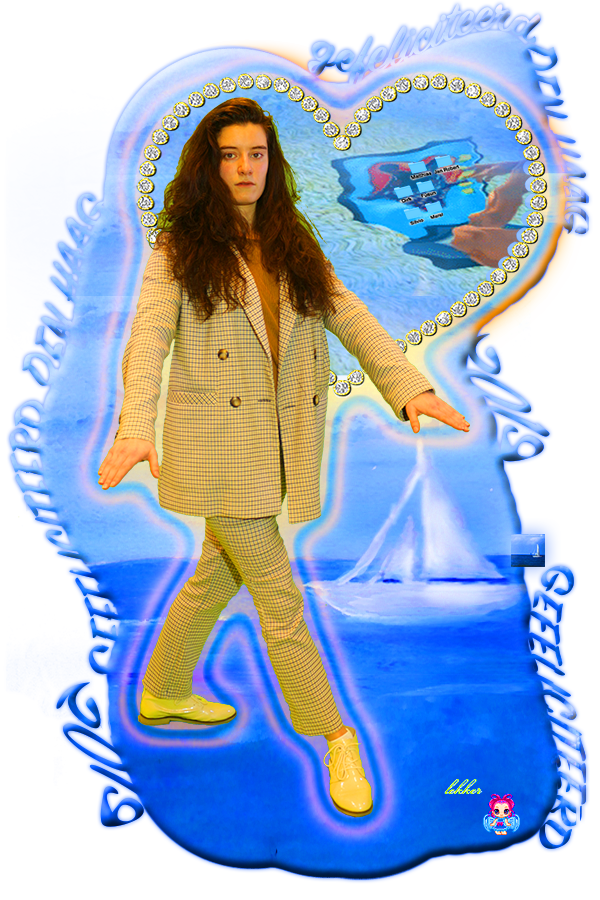

The Strike of a Ferocious Tigress
The Strike of a Ferocious Tigress
The Strike of a Ferocious Tigress
The Strike of a Ferocious Tigress
This thesis is a journey of an apprentice who is searching for answers.
Answers on how to combine two different mindsets on the mind and body into a unity. One says the mind and body are two separate parts that both life in different realms. The other mindset thinks the opposite, namely the mind and body consist in a continuum. They are one.
During my travels as a Pencak silat athlete I was able to experience both views on the mind and body. As a westerner I could train in Indonesia and experience the contrast between training in the Netherlands at first hand. You could say that the main reason for this research was that I wanted to know why the contrast between the training/people in the East/West was so enormous. Within pencak silat or any other martial art it is about finding a balance between your mind and body. I wondered if you could benefit from the silat lessons about this balance in your work as a designer.
With the use of interviewing my silat teachers, here in the Netherlands but also in Indonesia, and discussing the experiences/thoughts of a graphic designer who grew up in both, this journey took many turns. My preliminary position on this matter was me thinking one mindset was ‘better’ than the other. But throughout the whole process I discovered flaws in both and we indeed need to find a way to combine them so we can create a well balanced life.
Click Here for more
During my travels as a Pencak silat athlete I was able to experience both views on the mind and body. As a westerner I could train in Indonesia and experience the contrast between training in the Netherlands at first hand. You could say that the main reason for this research was that I wanted to know why the contrast between the training/people in the East/West was so enormous. Within pencak silat or any other martial art it is about finding a balance between your mind and body. I wondered if you could benefit from the silat lessons about this balance in your work as a designer.
With the use of interviewing my silat teachers, here in the Netherlands but also in Indonesia, and discussing the experiences/thoughts of a graphic designer who grew up in both, this journey took many turns. My preliminary position on this matter was me thinking one mindset was ‘better’ than the other. But throughout the whole process I discovered flaws in both and we indeed need to find a way to combine them so we can create a well balanced life.
Click Here for more


Lou Top 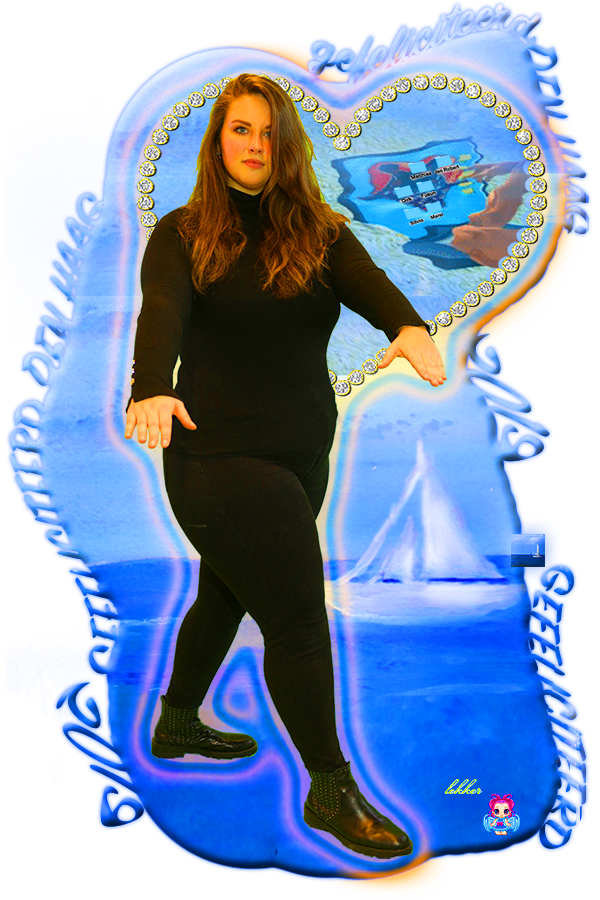

Steven Stephen
"I am like a superhero, call me basketballman
Steven Stephen
"I am like a superhero, call me basketballman"
He must be tall, dark and shimmering with sweat. His expression showing no one could ever reach his level of greatness. But this radiation of perfection is not only seen when on the court. This type of supernatural human excels in every aspect of life. This man embodies the term MVP trough everything he does. He is that what only a view achieve and many aspire.
This unrealistically perfect human might seem like a fictional character, only he is also seen in our world. The world where not only children can have unre alistic role models, but where adults are persuaded to also see the supernatural. They will look up to a man not only for its athletic abilities, but also expects him to be socially and politically engaged, portray the perfect family life, bean actor and musician while selling us everything he consumes.
This adult Disney World portrays a mature dream, such is only able to exist in America. As a non American basketball spectator this level of fandom is non existent in my world. American basketball is no longer a sport, it is a world created out of a game starring two teams that play a 40 minute match that is turned into an individual career selling the perfect life.
Click Here for more
This unrealistically perfect human might seem like a fictional character, only he is also seen in our world. The world where not only children can have unre alistic role models, but where adults are persuaded to also see the supernatural. They will look up to a man not only for its athletic abilities, but also expects him to be socially and politically engaged, portray the perfect family life, bean actor and musician while selling us everything he consumes.
This adult Disney World portrays a mature dream, such is only able to exist in America. As a non American basketball spectator this level of fandom is non existent in my world. American basketball is no longer a sport, it is a world created out of a game starring two teams that play a 40 minute match that is turned into an individual career selling the perfect life.
Click Here for more


Alfonso Yordi


Work in progress
Work in progress
Work in progress
Work in progress
Fetishize:
‘To have an irrational commitment to (something)’
This thesis aims to understand my practice as a graphic designer and more specifically my relationship it. By looking back at the 5 years I spend preparing myself to be a graphic I will explore the idea of becoming an achieving as a form of fetish. This thesis will explore the journey of one self through this process of becoming, and will place it in a bigger context, its desire to become, its failure of not being, the task of producing a final product and the value of it.
In order to tackle these large themes the thesis will begin with he falref my second year at KABK and how the idea that my work was not good enough became a personal failure and a personal belief of not being good enough. Graphic design became something too big to ever be mine and this was the start of obsession with it. My practice became a fetish because it became an unachievable object of desire, producing good work became essential to my validity as an individual it became the centre of my existence and a desire for the best version of myself had to be reflected in the projects I was able to produce.
This leads to my questioning of authorship, how healthy is it to see myself as my practice and can I ever separate myself from my practice? This question will be approach by investigating works by Barthes and Sara Ahmed on authorship and whether the author can ever be separate from the work it produces. The answer to the question will not be directly answered as there is no simple answer but rather I will continue to explore the relationship between myself and my practice by using different identity construction theories like Butler’s performativity and Munoz’s disindentification theory.
Through these theories I realize that I perform my identity as graphic designer and in order to dismantle the anxiety of producing a final ‘good enough’ product I need to understand that what I produce is not an essential representation of me but it is a fluid and temporal representation of something I created in a given moment and will continue to shift and grow with me, thus in a way my practice is non-existance, there is no graphic design that represents me because there is no me, there is only something I create in a certain moment within a time frame and according to my capabilities in that given moment. This liberates me from the pressure of producing and somehow gives me tools to understand my practice as something in a constant state of becoming, which I am able to re-appropriate.
Click Here for more
‘To have an irrational commitment to (something)’
This thesis aims to understand my practice as a graphic designer and more specifically my relationship it. By looking back at the 5 years I spend preparing myself to be a graphic I will explore the idea of becoming an achieving as a form of fetish. This thesis will explore the journey of one self through this process of becoming, and will place it in a bigger context, its desire to become, its failure of not being, the task of producing a final product and the value of it.
In order to tackle these large themes the thesis will begin with he falref my second year at KABK and how the idea that my work was not good enough became a personal failure and a personal belief of not being good enough. Graphic design became something too big to ever be mine and this was the start of obsession with it. My practice became a fetish because it became an unachievable object of desire, producing good work became essential to my validity as an individual it became the centre of my existence and a desire for the best version of myself had to be reflected in the projects I was able to produce.
This leads to my questioning of authorship, how healthy is it to see myself as my practice and can I ever separate myself from my practice? This question will be approach by investigating works by Barthes and Sara Ahmed on authorship and whether the author can ever be separate from the work it produces. The answer to the question will not be directly answered as there is no simple answer but rather I will continue to explore the relationship between myself and my practice by using different identity construction theories like Butler’s performativity and Munoz’s disindentification theory.
Through these theories I realize that I perform my identity as graphic designer and in order to dismantle the anxiety of producing a final ‘good enough’ product I need to understand that what I produce is not an essential representation of me but it is a fluid and temporal representation of something I created in a given moment and will continue to shift and grow with me, thus in a way my practice is non-existance, there is no graphic design that represents me because there is no me, there is only something I create in a certain moment within a time frame and according to my capabilities in that given moment. This liberates me from the pressure of producing and somehow gives me tools to understand my practice as something in a constant state of becoming, which I am able to re-appropriate.
Click Here for more


Chris Kore
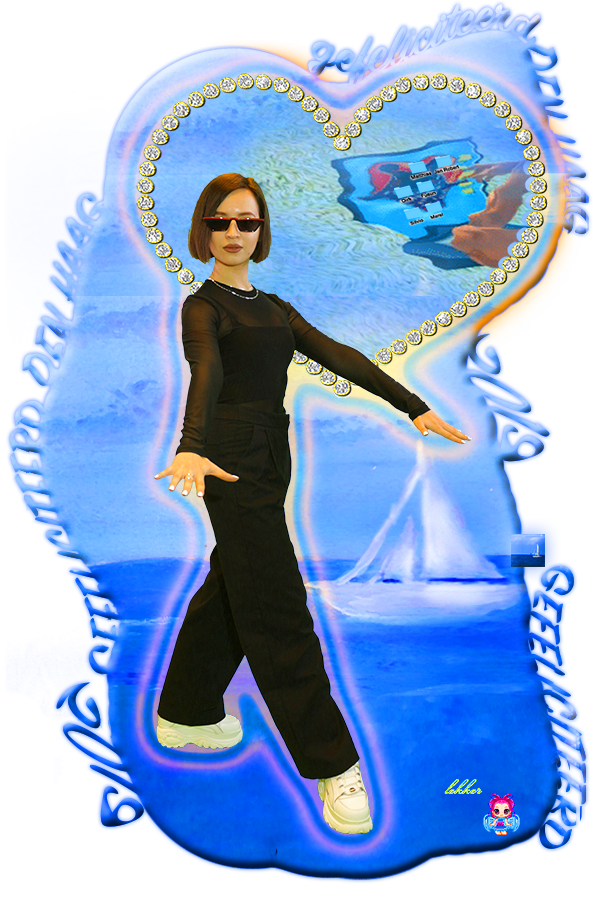

Gods of Gods of Synthetic Illusion
Gods of Synthetic Illusion
Gods of Synthetic Illusion
Gods of Synthetic Illusion
What if someone told you there was a world where you could easily teleport from Trafalgar Square to Alpha Centauri C, become a bird, and be poured through splashing purple lava into a glass on a table in your home? What if someone told you this was not a dream, overdose, or madness, but our current reality? We are at the dawn of breathtaking and dazzling times when more than everything is possible.
How exciting, creepy, and challenging it is to understand and accept the hybrid reality! This thesis is an experimental project combining theoretical research and artistic practice to understand the core philosophical concepts of Virtuality next to the fast development of virtual reality technology. It raises questions regarding the possibilities, dangers, and influence of the virtual experiences on the human mind and society. What should the god of synthetic illusion know and understand to be responsible for the whole reality of his creation?
Click Here for more
How exciting, creepy, and challenging it is to understand and accept the hybrid reality! This thesis is an experimental project combining theoretical research and artistic practice to understand the core philosophical concepts of Virtuality next to the fast development of virtual reality technology. It raises questions regarding the possibilities, dangers, and influence of the virtual experiences on the human mind and society. What should the god of synthetic illusion know and understand to be responsible for the whole reality of his creation?
Click Here for more


Artúr Andrási
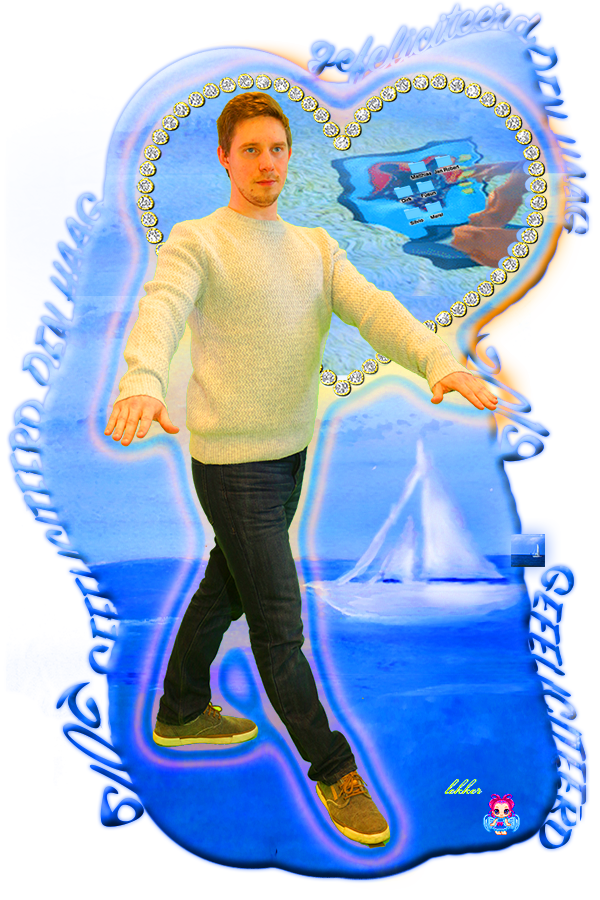

Guide to Solitude
Guide to Solitude
Guide to Solitude
Guide to Solitude
I am an introvert. It’s not necessarily the core of my personality but it definitely influences my everyday life, my friendships, network or working method. Does that mean that I create different artworks then extroverted artists? Or does that mean I read artworks differently than others? Not necessarily, but can I capture this specific type of personality through my design, can I translate that into a visual language?
In my thesis I research the theory of introversion via psychological studies and tests, creating a definition that is applicable to art. I analyse artworks to understand the way they represent introversion and the tools they are using to create the work’s “identity”. With my research, I aim to provide an inside on how psychology can affect and influence art and provide consciousness about building a specific atmosphere/identity in order to communicate the message in the most precise way to the right audience.
Click Here for more
In my thesis I research the theory of introversion via psychological studies and tests, creating a definition that is applicable to art. I analyse artworks to understand the way they represent introversion and the tools they are using to create the work’s “identity”. With my research, I aim to provide an inside on how psychology can affect and influence art and provide consciousness about building a specific atmosphere/identity in order to communicate the message in the most precise way to the right audience.
Click Here for more


Theresa Scherrer
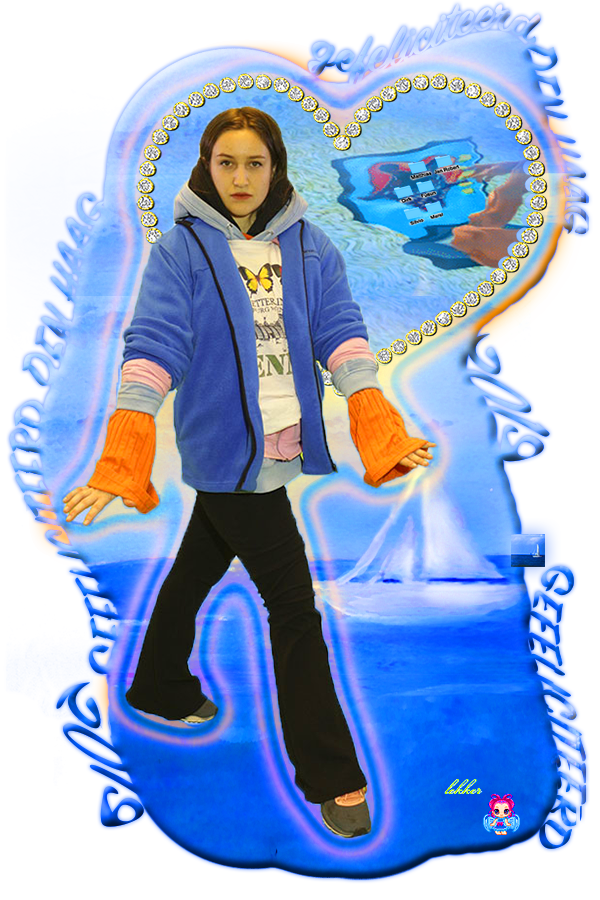

I Might Save This For Later
I can't help but quoting you.....
I Might Save This For Later
I can't help but quoting you.....
In the privileged moment of individualization in the history of knowledge, science and art, ideas are our commodity. Although we do acknowledge that thoughts come from a more complex constellation of things, we are easy in patronizing our own creative outcome. Every book has an author, every work an originator. The power belongs to the original! By pointing out another creatives un-originality, the critic has become a vocal sword fighting against the appropriation of the genuine. But who has the power to decide that one is less true than the other: All exists simultaneously. „It is a frequent habit when I discover several resemblances between two things to attribute to both equally, even on points in which they are in reality different, that which I have recognized to be true of only one of them. Combined with this is another perversity, an innate preference for the represented subject over the real one.“ (Oliver Laric) The real one is the first time we see, yet taking twin siblings who look identical but are born seconds apart, one is not less true than the other. Both seem to be equally original.
Originality implicates a singularity. What seems to matter the most for this thesis is that I disagree with the idea that an author is something a single individual can play. An author function became something anyone can play; The user gets to be a producer and vice versa; Creation becomes a collaborative act and the idea of one „great man“ who owns a thought obsolete. Taking this position is already an antithesis to what art seems to be seen as: the creation of an autonomous genius. With the freedom to write whatever they may please. Per definition, autonomy is independence. But we are always dependent on someone or something else, the system, the environment, the sponsor or a client that might shape how we work or who we become. Trying to achieve full autonomy seems to be a readymade fairytale, which already makes one of my intentions for writing this thesis obsolete: I will not become an autonomous designer in the end. Influence is inevitable. Is it the time for us designers to fall into the next existential crisis? I might save this for later, for now I am trying to (not) answer the following questions: (A) Who is the real author?; (B) What has he revealed of his most profound self in his language?; (C) Have we prove for its authenticity?; D How is it circulated, who controls it?; and (E) What’s the matter who’s speaking?
Click Here for more
Originality implicates a singularity. What seems to matter the most for this thesis is that I disagree with the idea that an author is something a single individual can play. An author function became something anyone can play; The user gets to be a producer and vice versa; Creation becomes a collaborative act and the idea of one „great man“ who owns a thought obsolete. Taking this position is already an antithesis to what art seems to be seen as: the creation of an autonomous genius. With the freedom to write whatever they may please. Per definition, autonomy is independence. But we are always dependent on someone or something else, the system, the environment, the sponsor or a client that might shape how we work or who we become. Trying to achieve full autonomy seems to be a readymade fairytale, which already makes one of my intentions for writing this thesis obsolete: I will not become an autonomous designer in the end. Influence is inevitable. Is it the time for us designers to fall into the next existential crisis? I might save this for later, for now I am trying to (not) answer the following questions: (A) Who is the real author?; (B) What has he revealed of his most profound self in his language?; (C) Have we prove for its authenticity?; D How is it circulated, who controls it?; and (E) What’s the matter who’s speaking?
Click Here for more


Hilde Barwegen
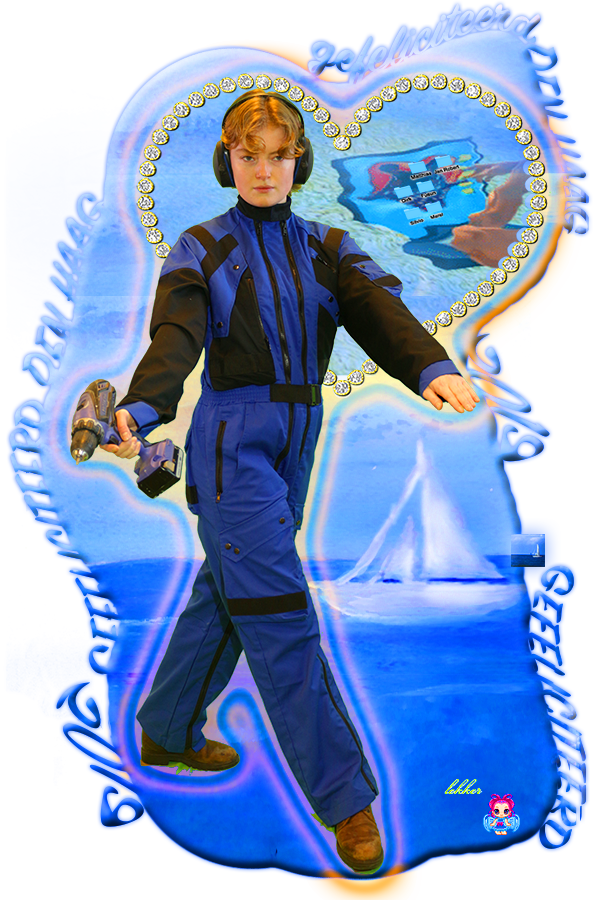

Afterlife in the Archive
When I fell into my grandmother's drawer'
Afterlife in the Archive
When I fell into my grandmother's drawer'
An archive is a place where documents are collected, from the past, the presence and the future. We don’t create new in it, we store. It functions because it is heavily ordered.
In my research I am looking into different approaches to collecting. A cabinet, the internet, a graveyard, an institutional archive and a miniature club could all be seen as parallel worlds from the one we live in. We store something there as an attempt to extending our memory or as an attempt to extend our life.
One part of my thesis is an archive I made that exists out of images people share on social media related to their grieve. In this archive I show the need for people to share their realization that life is finite. It is also a reason for people to share the proof of their own existence. A common believe is that you are not really dead if there is still people to remember you, your legacy or your ideas. Photo’s shared with hashtag #funeral selfie and hashtag #lastpicture went through the roof in the last ten years. To share a picture of your passed away beloved one online is a way to prevent the loss of information, to extend their existence.
Click Here for more
In my research I am looking into different approaches to collecting. A cabinet, the internet, a graveyard, an institutional archive and a miniature club could all be seen as parallel worlds from the one we live in. We store something there as an attempt to extending our memory or as an attempt to extend our life.
One part of my thesis is an archive I made that exists out of images people share on social media related to their grieve. In this archive I show the need for people to share their realization that life is finite. It is also a reason for people to share the proof of their own existence. A common believe is that you are not really dead if there is still people to remember you, your legacy or your ideas. Photo’s shared with hashtag #funeral selfie and hashtag #lastpicture went through the roof in the last ten years. To share a picture of your passed away beloved one online is a way to prevent the loss of information, to extend their existence.
Click Here for more


Nina van Tuikwerd
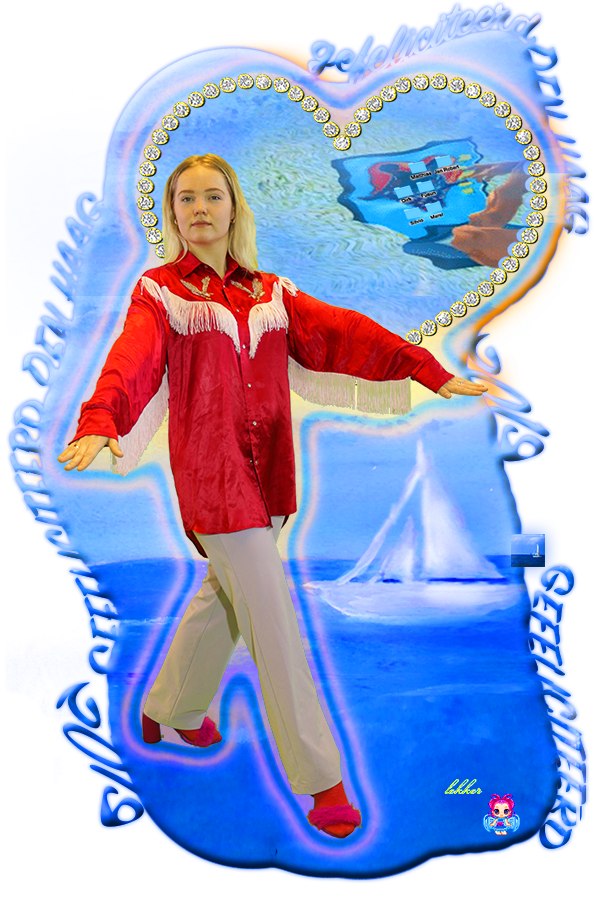

De macht van de tegenkracht
“Yes I’m trying to change my countries rules, I don't like them”
De macht van de tegenkracht
“Yes I’m trying to change my countries rules, I don't like them”
In een wereld vol protesten en demonstraties, ben ik op zoek naar de eigenzinnige eenling met een diepgewortelde moraal. De eenling die iconische gebaren of symbolen gebruikt in de strijd tegen machtsstructuren. Ik voel vaak een diepgevoelde innerlijke moraal tegen onrecht, maar ik zet mijn woorden niet om in actie.
Wat is elk symbool of gebaar dat de beginnende activisten kan gebruiken? En hoe gebruiken de eenlingen deze symbolen of gebaren in hun acties tegen de verschillende machtsstructuren? Dit ga ik doen door 18 verschillende personen uit te lichten. In 9 verschillende hoofdstukken vergelijk ik twee of drie personen met dezelfde beeldtaal voor het voeren van hun strijd. Onafhankelijk van elkaar hebben ze hetzelfde symbool of gebaar gebruikt om actie mee te voeren.
Het eerste wat je moet doen is wat meer oproer maken, kies een regel en breek hem. Je moet wel bereid zijn deze regel te vervangen voor een beter alternatief. Iedereen kan actievoeren, alleen moet je de eerste stap durven nemen. Als je die eerste stap hebt gezet moet je alleen nog het juiste hulpmiddel vinden en je bent klaar voor actie. Als je mind-set maar staat op het maken van een verschil. De machDe macht van de tegenkracht . De eigenzinnige eenlingen waren geen superhelden of speciale personen. Maar mensen zoals jij en ik, alleen hebben zij hun woorden omgezet in daden.
Click Here for more
Wat is elk symbool of gebaar dat de beginnende activisten kan gebruiken? En hoe gebruiken de eenlingen deze symbolen of gebaren in hun acties tegen de verschillende machtsstructuren? Dit ga ik doen door 18 verschillende personen uit te lichten. In 9 verschillende hoofdstukken vergelijk ik twee of drie personen met dezelfde beeldtaal voor het voeren van hun strijd. Onafhankelijk van elkaar hebben ze hetzelfde symbool of gebaar gebruikt om actie mee te voeren.
Het eerste wat je moet doen is wat meer oproer maken, kies een regel en breek hem. Je moet wel bereid zijn deze regel te vervangen voor een beter alternatief. Iedereen kan actievoeren, alleen moet je de eerste stap durven nemen. Als je die eerste stap hebt gezet moet je alleen nog het juiste hulpmiddel vinden en je bent klaar voor actie. Als je mind-set maar staat op het maken van een verschil. De machDe macht van de tegenkracht . De eigenzinnige eenlingen waren geen superhelden of speciale personen. Maar mensen zoals jij en ik, alleen hebben zij hun woorden omgezet in daden.
Click Here for more


Dominika Fojtikova


What are Governments in the Age of Populism?
What are Governments in the Age of Populism?
What are Governments in the Age of Populism?
What are Governments in the Age of Populism?
In my thesis I am focusing on the danger of collectivism and where it leads/led humanity. The topic comes from my own cultural background. I am from Slovakia which throughout the history used to be part of bigger social, political system. I was always fascinated by how influential communism was in my country. Slovakia also used to be part of “bigger picture” like the Ottoman Empire, Austria-Hungary Empire and later we were part of Communist system, later we were created into one country with Czech Republic, called Czechoslovakia, and of course now we are part of European Union. I think from there I came to a question of the ideology of collectivism. I am connecting the issue of collectivism with biblical stories which warn us about its power. I consider bible as very powerful document where whether you look at this more philosophical, historical or from religious perspective. I focus on specific stories, where bible warn us about power of human unity.
One of them is the story of Babel Tower from Old testament, the second is the Nebuchadnezzar’s Dream & Daniel’s translation of this dream from Genesis and the book of Revelation where apostle John describes the end of the world, the apocalypse, will happen once we will create one world government. Throughout these stories I am trying to find what makes collectivism dangerous and how it influenced political systems throughout the history of the world.How far can we go with the idea of one world, one government? One world government is a current topic of many discussions and people are wondering whether it will lead us to the“world peace” or if it will create a total dictatorship.
Click Here for more
One of them is the story of Babel Tower from Old testament, the second is the Nebuchadnezzar’s Dream & Daniel’s translation of this dream from Genesis and the book of Revelation where apostle John describes the end of the world, the apocalypse, will happen once we will create one world government. Throughout these stories I am trying to find what makes collectivism dangerous and how it influenced political systems throughout the history of the world.How far can we go with the idea of one world, one government? One world government is a current topic of many discussions and people are wondering whether it will lead us to the“world peace” or if it will create a total dictatorship.
Click Here for more


Carolina Valente Pinto
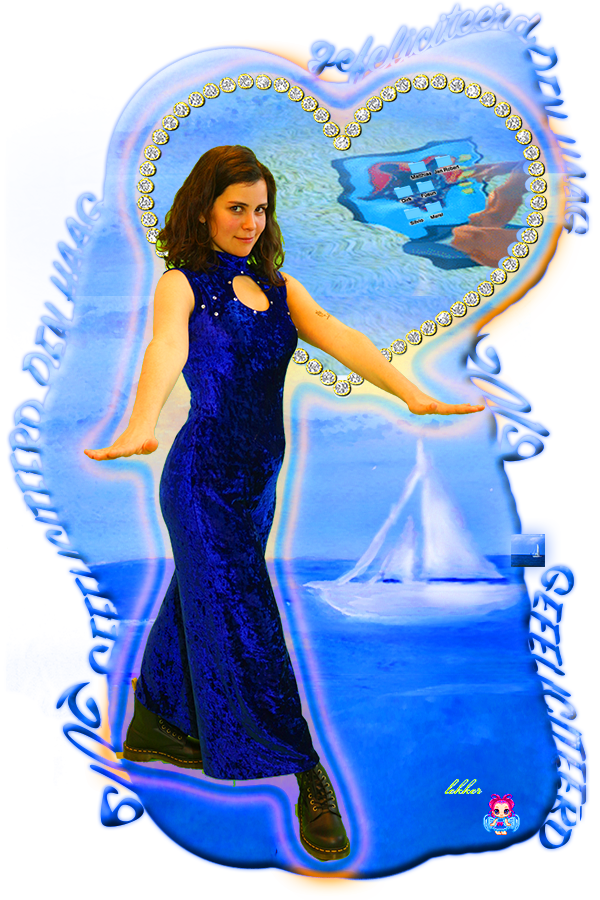

Lean On
“a small orgasm for a woman, a big orgasmic ecstasy for neoliberal womankind…”
Lean On
“a small orgasm for a woman, a big orgasmic ecstasy for neoliberal womankind…”
How does the love for work affects
making it a powerful and engaging tool for critique.
intimacy in a neo-liberal
This thesis tries to investigate love and intimacy in today’s career-driven culture, through a feminist critique. As a feminist, I see that the movement’s tendency is still to try and fit in a male discourse and body in terms of assuming an active roll in society. It is time to make our own roles and models. I think it’s important to bring to the table issues such as love and sexuality in an age where rationality and objectivity is valued over emotions and experiences. As our “work lives” are no longer separate from our “lives”, it’s important to reflect on how does this affect the way we love and are intimate with one another.
And in a age where feminism is no longer an F word and women are rising to powerful positions, it is also turning into a neo-liberal, capitalist movement that, as earlier stated, still values male dominated ways of being, thus complying with the patriarchal system it states to be against, not actively creating a change in socio-economical landscapes.
This research was conducted through a speculative short story, in order to create a world where the merge of work and love has gone so far and they can no longer be perceived as two things. Speculation creates an imaginary setting that is based on present realities. How does the love for work affects making it a powerful and engaging tool for critique.
Click Here for more
This thesis tries to investigate love and intimacy in today’s career-driven culture, through a feminist critique. As a feminist, I see that the movement’s tendency is still to try and fit in a male discourse and body in terms of assuming an active roll in society. It is time to make our own roles and models. I think it’s important to bring to the table issues such as love and sexuality in an age where rationality and objectivity is valued over emotions and experiences. As our “work lives” are no longer separate from our “lives”, it’s important to reflect on how does this affect the way we love and are intimate with one another.
And in a age where feminism is no longer an F word and women are rising to powerful positions, it is also turning into a neo-liberal, capitalist movement that, as earlier stated, still values male dominated ways of being, thus complying with the patriarchal system it states to be against, not actively creating a change in socio-economical landscapes.
This research was conducted through a speculative short story, in order to create a world where the merge of work and love has gone so far and they can no longer be perceived as two things. Speculation creates an imaginary setting that is based on present realities. How does the love for work affects making it a powerful and engaging tool for critique.
Click Here for more


Peter van Langen
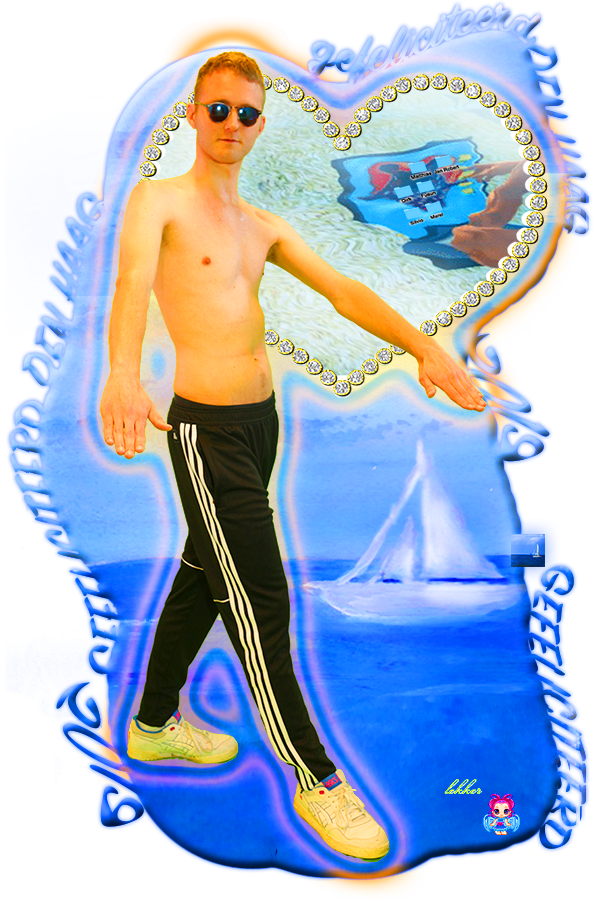

Last Dance
If I Can’t Dance, I Don’t Want To Be Part of Your Revolution”
Last Dance
If I Can’t Dance, I Don’t Want To Be Part of Your Revolution”
Members of the queer community continue to face inequality and violence. From New York’s dance floors in the 70s to Georgian club Bassiani today, dance floors form community centres to resist oppression and violence. However, a large number of representations of underground club culture fail to show the meaningful aspect of hedonistic raves. Dance floors that form platforms for Work in progressive movements are victims of police raids. Places where people criticise society and promote alternative values and cultures, can be a political enemy. Therefore, the clubbing community needs to reclaim their spaces and fight for them. Understanding the value of these safer environments helps in this fight. Discussing the impact dance floors have on marginalised communities can influence like-minded people.
The research argues that dance floors go beyond hedonistic playgrounds and function as platforms to resist oppression and violence the queer community faces. The argumentation is derived from interviews with key activists and artists for whom nightlife forms an essential role in their lives. The study introduces dance floors from the past that have been fundamental for queer underground nightlife. It focuses on the role Georgian club Bassiani plays in an environment with a low acceptance towards the queer community. These results indicate that dance floors can go beyond hedonism and play a crucial roles in the lives of these people. On this basis, it is recommended for people active in underground club culture, to act responsible towards representations. This can be accomplished by taking a distance from the fashionable representations of queer communities. Further research could be undertaken to identify other factors that could help defending these safer environments.
Click Here for more
The research argues that dance floors go beyond hedonistic playgrounds and function as platforms to resist oppression and violence the queer community faces. The argumentation is derived from interviews with key activists and artists for whom nightlife forms an essential role in their lives. The study introduces dance floors from the past that have been fundamental for queer underground nightlife. It focuses on the role Georgian club Bassiani plays in an environment with a low acceptance towards the queer community. These results indicate that dance floors can go beyond hedonism and play a crucial roles in the lives of these people. On this basis, it is recommended for people active in underground club culture, to act responsible towards representations. This can be accomplished by taking a distance from the fashionable representations of queer communities. Further research could be undertaken to identify other factors that could help defending these safer environments.
Click Here for more


Wannes Vrijs


Extatisch
“Every extension also produces an amputation of some kind. So I guess just the question becomes, is the extension worth the amputation”
Extatisch
“Every extension also produces an amputation of some kind. So I guess just the question becomes, is the extension worth the amputation”
Binnen mijn thesis onderzocht ik de relatie tussen het lichaam en grafisch ontwerp naar aanleiding van de beperkte fysieke interactie binnen toenemend digitaal ontwerpen.
De interesse in dit onderwerp ontstond uit de wisselwerking tussen mijn passie voor verven met spuitverf, waar het lichaam actief betrokken wordt, en digitaal grafisch ontwerp, waar fysieke interactie beperkt blijft tot de armen en handen. Ik vroeg me af of het gebruik van het menselijk lichaam mijn digitaal grafisch ontwerp kon verrijken.
Dit onderzoek bouwt op kennis gehaald uit arbitrair gekozen bronnen binnen de Westerse wetenschap en filosofie. Gecombineerd met beeldend materiaal uit kunst en cultuur vormde ik de basis waaraan ik bestaande opvattingen toetste en waaruit ik nieuwe conclusies trok. Het lichaam neemt een actieve rol in binnen mijn ontwerp en ik was zelf overtuigd van de voordelen. Het gevoerde onderzoek bevestigt een positief verband maar ontkent daarnaast de waarde van de bestaande digitale tools niet.
Click Here for more
De interesse in dit onderwerp ontstond uit de wisselwerking tussen mijn passie voor verven met spuitverf, waar het lichaam actief betrokken wordt, en digitaal grafisch ontwerp, waar fysieke interactie beperkt blijft tot de armen en handen. Ik vroeg me af of het gebruik van het menselijk lichaam mijn digitaal grafisch ontwerp kon verrijken.
Dit onderzoek bouwt op kennis gehaald uit arbitrair gekozen bronnen binnen de Westerse wetenschap en filosofie. Gecombineerd met beeldend materiaal uit kunst en cultuur vormde ik de basis waaraan ik bestaande opvattingen toetste en waaruit ik nieuwe conclusies trok. Het lichaam neemt een actieve rol in binnen mijn ontwerp en ik was zelf overtuigd van de voordelen. Het gevoerde onderzoek bevestigt een positief verband maar ontkent daarnaast de waarde van de bestaande digitale tools niet.
Click Here for more


Evy van Schelt
Looking Seriously Alive!
Looking Seriously Alive!
Looking Seriously Alive!
Looking Seriously Alive!
An ax, shovel and a fishhook. Trees, metals, and the ocean. All have been of incredible importance in the development of our tools, which make it possible for us to have the tools and products we have today. But more often than not we can observe the overuse of our tools, and the abuse of nature by our tools. When cutting down one tree, an entire forest is taken down with it. When digging for metals, the earth now has holes as deep as mountains for us to extract our gold, metals, and minerals.
This paper researches the fine balance between power and overpower over nature which we accomplished trough our tools. Whether that tool is an ax, a shovel or something as small as a fishhook. As a case study to further explore this relation between the human, nature, and our tools, I take sports fishing as example, in which the imbalance between power and overpower over nature can be observed. I want to change current perception of our tools into one that is more environmentally conscious by investigating the human relation and materialisation of nature trough the application and design of our tools, specified to the world of sports fishing.
Click Here for more
This paper researches the fine balance between power and overpower over nature which we accomplished trough our tools. Whether that tool is an ax, a shovel or something as small as a fishhook. As a case study to further explore this relation between the human, nature, and our tools, I take sports fishing as example, in which the imbalance between power and overpower over nature can be observed. I want to change current perception of our tools into one that is more environmentally conscious by investigating the human relation and materialisation of nature trough the application and design of our tools, specified to the world of sports fishing.
Click Here for more


Roderick Cornelissen
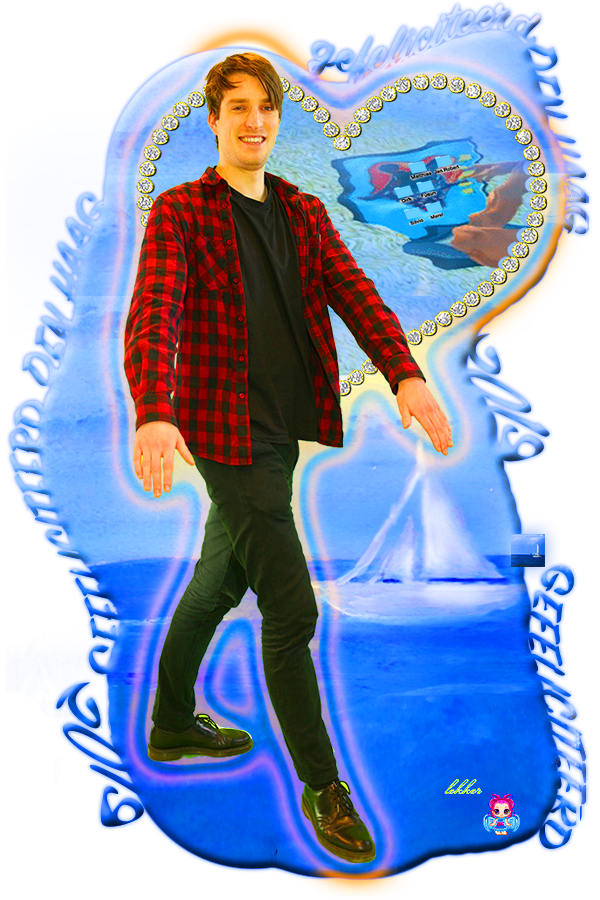

"Creative Craftsmanship: the need for time and energy in the making process"
"Creative Craftsmanship: the need for time and energy in the making process"
"Creative Craftsmanship: the need for time and energy in the making process"
"Creative Craftsmanship: the need for time and energy in the making process"
In today’s fast phased society we are doing more and more knowledge based work where we have to think faster and faster and work less and less with our hands, which apparently became too slow. From a personal perspective I think the work philosophy of craftsmanship is still important in today’s society. And there are a lot of misplaced conceptions about craftsmanship and time and effort it into these crafts.
In my thesis I try to reflect on the benefits of the work philosophy of the creative craftsman and what this means for the design process in general. I hope I can make the essence of these creative crafts visible. And create a better understanding and argumentation for the need of these creative crafts in today’s fast phased society where thinking isthe standard and working with hands is undervalued.
Click Here for more
In my thesis I try to reflect on the benefits of the work philosophy of the creative craftsman and what this means for the design process in general. I hope I can make the essence of these creative crafts visible. And create a better understanding and argumentation for the need of these creative crafts in today’s fast phased society where thinking isthe standard and working with hands is undervalued.
Click Here for more


Auke Lansink
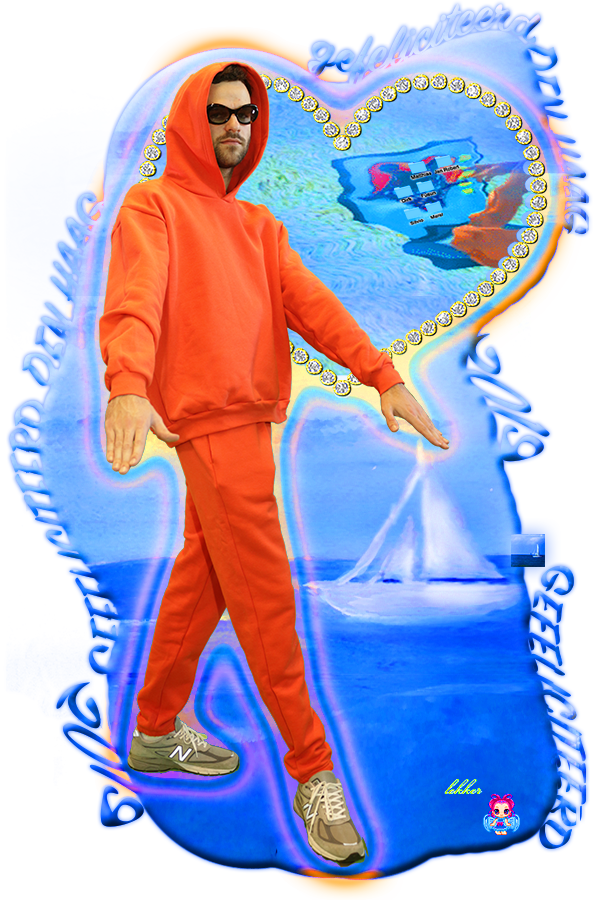

De rafelrandjes van het Modernisme
De rafelrandjes van het Modernisme
De rafelrandjes van het Modernisme
De rafelrandjes van het Modernisme
In deze scriptie onderzoek ik de rafelrandjes van het modernisme en vraag ik mijzelf af welke positie ik zou innemen in de consternatie rondom controversiële opdrachtgevers vandaag de dag. Hypocrisie, de houding van iemand die zich eerlijker voordoet dan hij of zij daadwerkelijk is. Deze huichelarij speelt zich in alle lagen van de maatschappij af. Het filosoferen of speculeren over de motivaties die leiden tot hypocriet gedrag, is een bezigheid waarin ik geïnteresseerd ben. Ik ben liefhebber van het modernisme. Deze stroming ontstond ruim 100 jaar geleden, echter de werken zien er uit als van vandaag. Hun ontwerpen waren vernieuwend en in essentie heel eenvoudig. De modernisten kwamen in verzet tegen traditionele opvattingen en kunstvormen. Dat rebelse spreekt mij aan. Ik wil mijzelf graag specialiseren in deze stroming.
Het modernisme word op vele manieren gedefinieerd; definities die elkaar bovendien min of meer uitsluiten. De modernistische mens was een pelgrim: op zoek naar de waarheid. De modernistische kunst van 1900 zocht naar geheel nieuwe vormen, om daarmee een bijdrage te leveren aan een betere maatschappij. Maar er is ook veel controverse over met wie ze samenwerkten. Het modernisme heeft in de loop van de tijd enkele rafelrandjes gekegen. Wie waren de modernisten (die soms met foute leiders werkten) en mag ik nog van het modernisme houden?
Click Here for more
Het modernisme word op vele manieren gedefinieerd; definities die elkaar bovendien min of meer uitsluiten. De modernistische mens was een pelgrim: op zoek naar de waarheid. De modernistische kunst van 1900 zocht naar geheel nieuwe vormen, om daarmee een bijdrage te leveren aan een betere maatschappij. Maar er is ook veel controverse over met wie ze samenwerkten. Het modernisme heeft in de loop van de tijd enkele rafelrandjes gekegen. Wie waren de modernisten (die soms met foute leiders werkten) en mag ik nog van het modernisme houden?
Click Here for more


Jan Husstedt
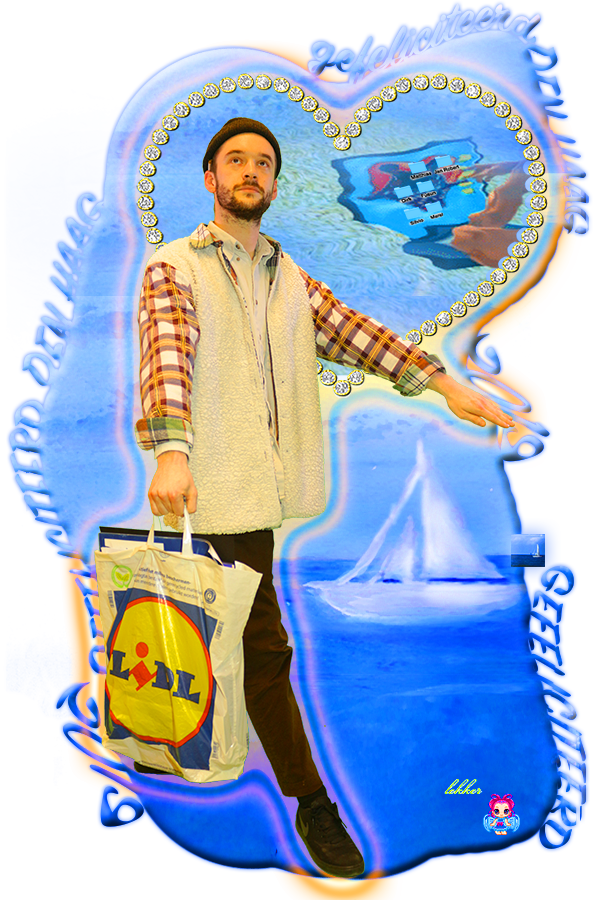

Drift Carefully And Come Back Soon
The Eternal Pursuit of Togetherness
Drift Carefully And Come Back Soon
The Eternal Pursuit of Togetherness
Pangaea is a supercontinent that existed 250 million years ago. Despite the fact, that human life has not been present yet, it is important paying attention to it’s map as a possible narrative tackling our present concerns. Pangaea is a supercontinent, which means that all continental plates are mingling and shifting into one big disk. According to scientists, this event will happen again in about 250 million years in future.
History begins 70.000 years ago, with the cognitive revolution during which – we don’t really know why – we gained remarkable cognitive abilities. Above all to communicate, to use language, to create and spread fictions.
Having a look at Pangaea, we have to acknowledge the fact that continental plates in one way or the other will become one. As a fictional narrative and as a model of thought, this would have major impact on how we think we could live and work all together.
The thesis aims at encouraging a narrative of our world that could help us staying with the trouble, growing and becoming greater than we are. By connecting current developments with the past and the possible future, Pangaea, as an utopian future, shall be the common ground encouraging us to question the basic human relations of our world. Change is the only constant.
The thesis is looking at some basic ideas of humankind – migration, collaboration and change – mostly in the context of Europe. The thesis does not provide a specific programme, but rather gives a point of view that could help imagining how our closest environments could work.
Regarding the current developments in global as well as european polity, it must seem like Pangaea has never existed. The disregard of Pangaea as a scientific fiction, providing a model of act and thought, must result in rigidity and stiffness, a flourishing ground for alternative skepticism and conservative flatness. As long as we do not embody this universal idea in our closest environments, society as we enjoy it will fall into pieces. Must Europe celebrate it’s death?
Click Here for more
History begins 70.000 years ago, with the cognitive revolution during which – we don’t really know why – we gained remarkable cognitive abilities. Above all to communicate, to use language, to create and spread fictions.
Having a look at Pangaea, we have to acknowledge the fact that continental plates in one way or the other will become one. As a fictional narrative and as a model of thought, this would have major impact on how we think we could live and work all together.
The thesis aims at encouraging a narrative of our world that could help us staying with the trouble, growing and becoming greater than we are. By connecting current developments with the past and the possible future, Pangaea, as an utopian future, shall be the common ground encouraging us to question the basic human relations of our world. Change is the only constant.
The thesis is looking at some basic ideas of humankind – migration, collaboration and change – mostly in the context of Europe. The thesis does not provide a specific programme, but rather gives a point of view that could help imagining how our closest environments could work.
Regarding the current developments in global as well as european polity, it must seem like Pangaea has never existed. The disregard of Pangaea as a scientific fiction, providing a model of act and thought, must result in rigidity and stiffness, a flourishing ground for alternative skepticism and conservative flatness. As long as we do not embody this universal idea in our closest environments, society as we enjoy it will fall into pieces. Must Europe celebrate it’s death?
Click Here for more


Yeon Sung
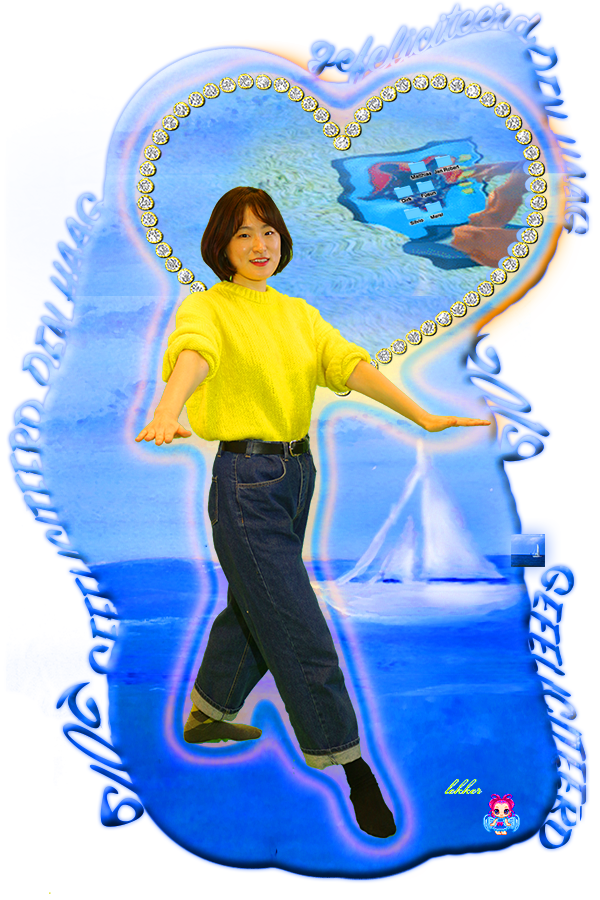

Rusty Odyssey
: The colonial trajectory of copper across the Atlantic
Rusty Odyssey
: The colonial trajectory of copper across the Atlantic
Copper, the first metal processed by Neolithic humans has accompanied the history of humankind for approximately 10,000 years, disguised in various forms of tools, ornaments, sculptures, currency, weapons, and conductors of electricity. In the idea of New Materialism, the atomic number 29 as signed material has been an animate object for a transversal human agency that has conveyed the propagation of colonial ideologies between two formal imperialists, the Netherlands and Japan.
Former imperialists on the opposite coast of the Pacific enriched their territories which led the rise of colonialism, exchanging commodities and Work in progressive ideas through the trade of copper. The mined raw copper was smelted in dif ferent forms that embodied the physical and spiritual desire of the imperialists, exploiting their colonies. The colonial era declined, but the post-colonial specters made of copper has been bequeathed as historical heritages and imperial hege monies, leaving wounds in the contemporary age.
Along with the transformation of copper on the colonial trajectory, Rusty Odyssey takes multidisciplinary roles of a historian and a graphic designer, provoking historian-disci plined statements interpreted in the artistic voice of a graphic designer to the ignorance of colonialism inherited over centuries and regions. It is a research essay of an interpre tation of historical documentation that applied an analogy of visual evidence in artifacts in historiographic and theoretical perspectives. This article also examines conflicts in the con temporary era over copper to lay the foundation of my future work through the perspective a Korean graphic designer residing in the Netherlands.
Click Here for more
Former imperialists on the opposite coast of the Pacific enriched their territories which led the rise of colonialism, exchanging commodities and Work in progressive ideas through the trade of copper. The mined raw copper was smelted in dif ferent forms that embodied the physical and spiritual desire of the imperialists, exploiting their colonies. The colonial era declined, but the post-colonial specters made of copper has been bequeathed as historical heritages and imperial hege monies, leaving wounds in the contemporary age.
Along with the transformation of copper on the colonial trajectory, Rusty Odyssey takes multidisciplinary roles of a historian and a graphic designer, provoking historian-disci plined statements interpreted in the artistic voice of a graphic designer to the ignorance of colonialism inherited over centuries and regions. It is a research essay of an interpre tation of historical documentation that applied an analogy of visual evidence in artifacts in historiographic and theoretical perspectives. This article also examines conflicts in the con temporary era over copper to lay the foundation of my future work through the perspective a Korean graphic designer residing in the Netherlands.
Click Here for more


Cato Stigter
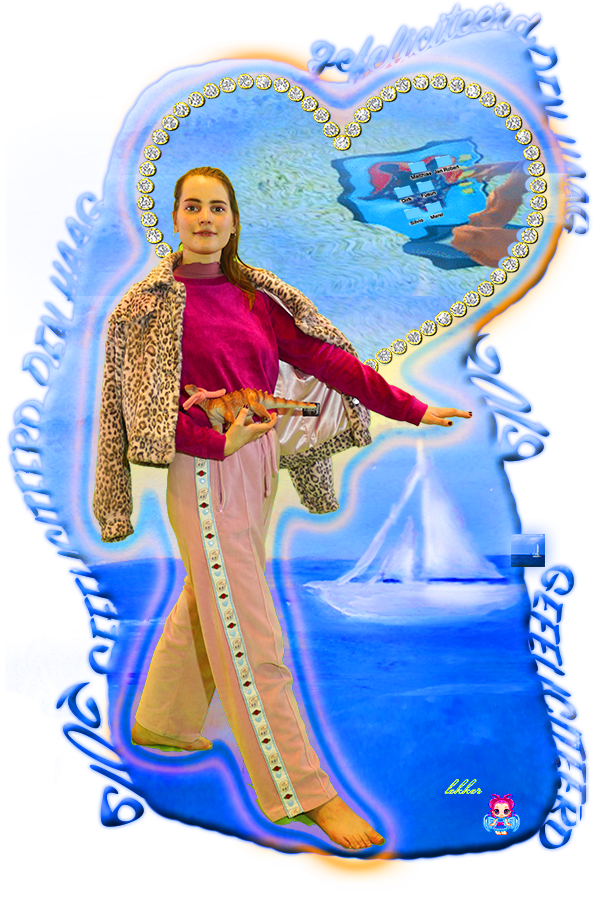

Seriously Cute
" All children grow up except one..."
Seriously Cute
" All children grow up except one..."
I want to take a closer look at the word cute; I use this word a lot and think this word is more meaningful than people think also I feel cute can be so many things, but what is does cute look like? How can you describe it?
I am interested in when cute can be unexpected, or used as a strategy to achieve something. My research question is: Where is the border between something being cute and something that is made cute to serve a different purpose? I tried to find the answer to this question by keeping my eyes open for all the cute things around me next to that I also read some books, listened to music, watched movies, read various articles and went to an exhibition.
I am a bit naive sometimes and thought that cuteness did not have a hidden agenda, but while researching I found out that it has in a lot of cases. Which sometimes can also be good but sometimes it can be bad and it’s hard to tell when this happens because cute can simply not be seen as something dangerous. Our basic instincts tell us that it’s harmless and needs our help to survive.
So, If you know how to use it, cute can become a dangerous weapon.
Click Here for more
I am interested in when cute can be unexpected, or used as a strategy to achieve something. My research question is: Where is the border between something being cute and something that is made cute to serve a different purpose? I tried to find the answer to this question by keeping my eyes open for all the cute things around me next to that I also read some books, listened to music, watched movies, read various articles and went to an exhibition.
I am a bit naive sometimes and thought that cuteness did not have a hidden agenda, but while researching I found out that it has in a lot of cases. Which sometimes can also be good but sometimes it can be bad and it’s hard to tell when this happens because cute can simply not be seen as something dangerous. Our basic instincts tell us that it’s harmless and needs our help to survive.
So, If you know how to use it, cute can become a dangerous weapon.
Click Here for more


Roslana Yotova
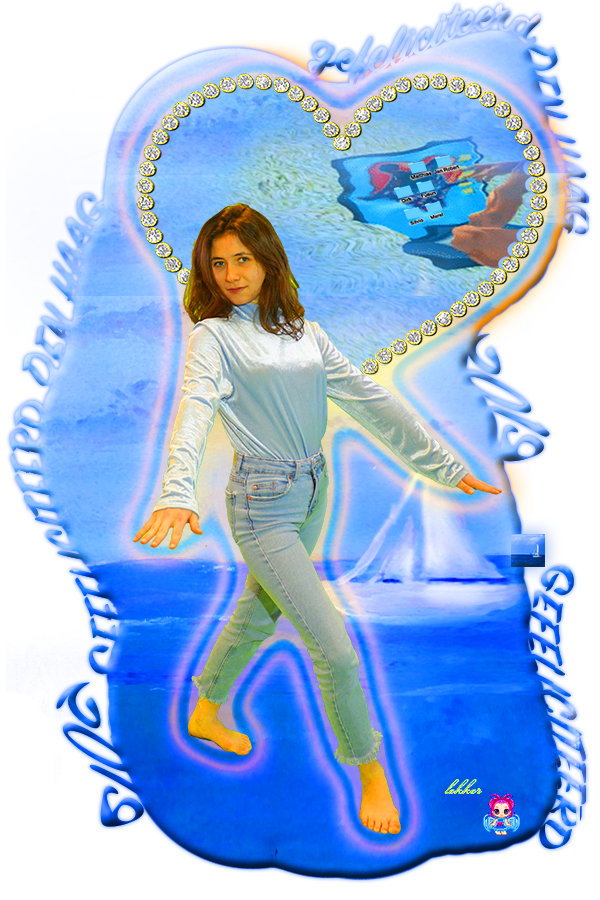

Use a catchy title
Use a catchy title
Use a catchy title
Use a catchy title
What is the meaning of meaning? Funny enough it is what is meant by something. But meaning also means the shared experience of communication. Communication comes from the Latin word communicare, which literary means to share. When we communicate we share meaning and create value. Communication and therefore communities, are an essential part of human nature and history. The individual has always been a part of a bigger whole. This is because of our natural urge to share. We are social beings. When we share meaning, we share our existence and affirm each-other’s presence. We negotiate trust, truth and value. But the practices of sharing imply their very own rules. Sometimes they might even become games of power.
In my argumentation I compare communication to a game because of their similar features. Some being the participatory nature of the game and the rules that make the game what it is. When we communicate we participate in an exchange of meaning. It is like a game of sharing feelings, thoughts, experiences, information, value. Their expression is meanwhile governed by sets of rules. For instance the rules of languages, cultures, cultural institutions, media, etcetera.
The social world is a game in which we all participate. Today communication has become so ubiquitous and mediated that it seems like we do not share meaning anymore. We do not recognise each other and we become alienated from the other. This is because our common experience - the social world, is captured in a manipulated state of interactions. Free communication on the opposite creates shared meaning. But in order to escape the rules of these manipulated communication environments, we should be exploring new territories and creating spaces for free exchange. That would mean cheating in the social world or even creating new rules, that emerged in a dialogue between the participants of the social game, rather than imposed by outside forces. Imagination and play are crucial for the creation of these spaces. They help us to distance ourself from the situation and understand how things can be different.
Click Here for more
In my argumentation I compare communication to a game because of their similar features. Some being the participatory nature of the game and the rules that make the game what it is. When we communicate we participate in an exchange of meaning. It is like a game of sharing feelings, thoughts, experiences, information, value. Their expression is meanwhile governed by sets of rules. For instance the rules of languages, cultures, cultural institutions, media, etcetera.
The social world is a game in which we all participate. Today communication has become so ubiquitous and mediated that it seems like we do not share meaning anymore. We do not recognise each other and we become alienated from the other. This is because our common experience - the social world, is captured in a manipulated state of interactions. Free communication on the opposite creates shared meaning. But in order to escape the rules of these manipulated communication environments, we should be exploring new territories and creating spaces for free exchange. That would mean cheating in the social world or even creating new rules, that emerged in a dialogue between the participants of the social game, rather than imposed by outside forces. Imagination and play are crucial for the creation of these spaces. They help us to distance ourself from the situation and understand how things can be different.
Click Here for more


Sophia de Jong
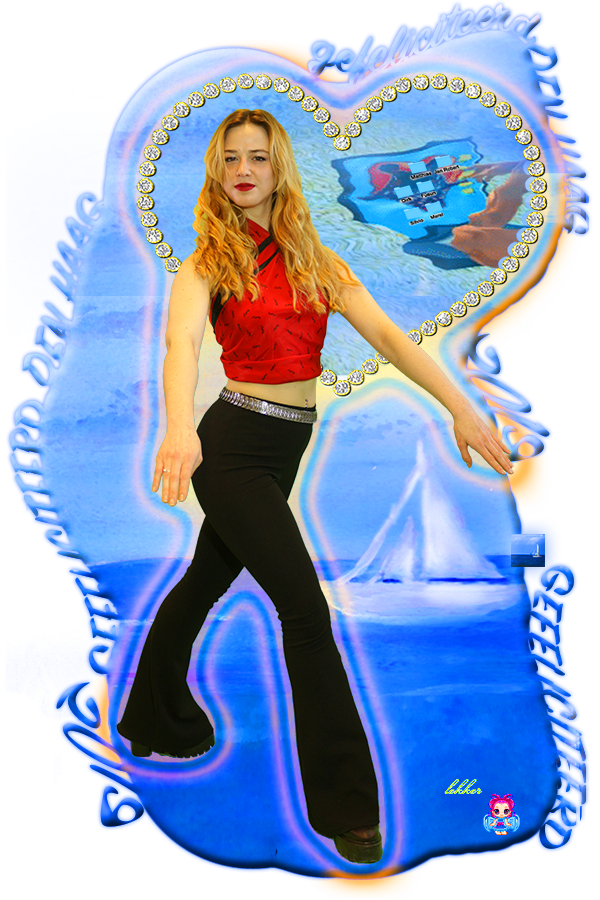

Transhumanism and the Enhancement of Nature
"We were born in a world that was already designed."
In this age of advancing technology we are becoming increasingly impatient with what the body nature has given us with our frailties and
limitations. While our mind soars, our bodies seem to frozen in time, but what if we can build a better body using technology to fix the human form and then improve upon it? Make it stronger, faster, smarter and create the human of the future. But what for?
Transhumanists, or those who are loyal to the ideals of the improvement of the human species through enhancement as a moral obligation, believe they are the suppliers of the torch that will take us to an enlightened future. Transhumanism wants to dominate and modify the human nature, and take control of its human evolution to turn it into a post-human society, making the course of nature’s future a malleable property. In the present moment humankind has the power to modify its environment and it’s own nature, thins that before were just mere wishes or pure imagination. Transhumanist believe in the expression of a better (enhanced) humankind. This new possibilities of intervention have brought to the light the long debate of the relationship of the between humanity and nature and raise new questions about the consequences of this possible interventions.
Throughout this work, I will question the implementation of transhumanist arguments and their philosophical ethics, counterposing them with the the questions of what is the notion of nature. The eager of humankind to have control of nature. Their ideology is based on new technological developments have to be discussed and analysed in depth, taking into account both the benefits and possible harms of its implications, as well as the consequences on the shift of the definition of human nature.
Click Here for more
Transhumanists, or those who are loyal to the ideals of the improvement of the human species through enhancement as a moral obligation, believe they are the suppliers of the torch that will take us to an enlightened future. Transhumanism wants to dominate and modify the human nature, and take control of its human evolution to turn it into a post-human society, making the course of nature’s future a malleable property. In the present moment humankind has the power to modify its environment and it’s own nature, thins that before were just mere wishes or pure imagination. Transhumanist believe in the expression of a better (enhanced) humankind. This new possibilities of intervention have brought to the light the long debate of the relationship of the between humanity and nature and raise new questions about the consequences of this possible interventions.
Throughout this work, I will question the implementation of transhumanist arguments and their philosophical ethics, counterposing them with the the questions of what is the notion of nature. The eager of humankind to have control of nature. Their ideology is based on new technological developments have to be discussed and analysed in depth, taking into account both the benefits and possible harms of its implications, as well as the consequences on the shift of the definition of human nature.
Click Here for more


Risto Kujanpää
Archives of the North
Archives of the North
Archives of the North
Archives of the North
In my thesis, I’m looking for possible tools for the Sami to render themselves visible. Sami people have formerly faced systemic oppression. They have been made invisible. Their bodies have been racialised, examined, scaled and measured. Fennoscandian countries Norway, Sweden and Finland tried to suppress the Sami voice. The nation states tried to silence the Sami language, and silence their drum.
Sami are the indigenous people of Norway, Sweden and Finland. Some Sami also live in Northern Russia. They are the only indigenous people recognised by the European Union, but no-one ever asked if they would like to join. Instead, their land was occupied and their history over-written. The above-mentioned Nordic nation states interfered with Sami territory, where they had been living in for thousands of years. Maps were drawn and documents created. According to the documents designed by the oppressors, the seminomadic Sami weren’t able to move across their land according to their natural, annual cycle. They had to choose between their colonisers.
In my thesis I’m asking how an oppressed language can emancipate and be noticed amidst the majority. I’m writing against a universe, I’m arguing for diverse conditions of living – a pluriverse. Furthermore I’m asking, whether, in the context of language, a typeface can become a vessel for communicating values of inclusion. Theory will be accompanied with very hands-on practical knowledge that I have gained along the thesis process through discussions, lectures and literature. Theory and practice intertwine and morph into a cyclical design methodology. This methodology will, in one way or the other, be used to actualise the graduation work that will follow. The endeavour is thus both theoretical and practical, preparing me to the actualisation of a culturally sensitive, multilingual design.
Monotheist religion and nation state have a long tradition in going hand in hand. Within our populist times, there is also a freak show of white suprematist ideas. During these times it is important to listen to cultures that operate with a whole another set of values.
My plan is to conduct a hands-on study of Northern Sami, Inari Sami and Skolt Sami, which are the three Sami languages spoken in Finland. For centuries, it was forbidden to teach or speak Sami languages in Fennoscandian schools. Because of polytheist and animist beliefs, Sami people were blamed for occultism. Sami children were taken from their parents age 7, and sent to boarding schools with strict discipline and punishments if speaking a word in their own language. The children were told that their culture is dying. Before the second world war eugenics was being introduced, especially in Sweden. Sami people were among those, who were being racially examined. Soon the Swedish State Institute for Racial Biology concentrated their racialising gaze wholly towards the Sami. Indigenous graves were being dug open to conduct more research.
Today Sami languages are reviving. They are being taught in schools and universities. In their written forms, the languages are based on the Latin script. However, there’s a scarcity of typefaces taking the typographic needs of Sami into consideration.
When including specific languages that are in a threatened position, can a typeface have a role in a cultural paradigm shift? Can it have a role in introducing a more inclusive tone of voice and facilitating change?
There are examples of insensitive type design trying to reflect the character of a culture, ending up as caricatures. Connections with linguistics and experts should be established. With care and thoroughness one can reach a conscious design that doesn’t appropriate nor stereotype.
As background, I will introduce some key elements of Sami world view and mysticism. These are essential tools that do not work by the logic of colonialism. This is a Northern real-life example of how language, and thus typography, is political. I believe to reveal something about the nature of typography as a tool for oppression and on the other hand, a means to include.
Click Here for more
Sami are the indigenous people of Norway, Sweden and Finland. Some Sami also live in Northern Russia. They are the only indigenous people recognised by the European Union, but no-one ever asked if they would like to join. Instead, their land was occupied and their history over-written. The above-mentioned Nordic nation states interfered with Sami territory, where they had been living in for thousands of years. Maps were drawn and documents created. According to the documents designed by the oppressors, the seminomadic Sami weren’t able to move across their land according to their natural, annual cycle. They had to choose between their colonisers.
In my thesis I’m asking how an oppressed language can emancipate and be noticed amidst the majority. I’m writing against a universe, I’m arguing for diverse conditions of living – a pluriverse. Furthermore I’m asking, whether, in the context of language, a typeface can become a vessel for communicating values of inclusion. Theory will be accompanied with very hands-on practical knowledge that I have gained along the thesis process through discussions, lectures and literature. Theory and practice intertwine and morph into a cyclical design methodology. This methodology will, in one way or the other, be used to actualise the graduation work that will follow. The endeavour is thus both theoretical and practical, preparing me to the actualisation of a culturally sensitive, multilingual design.
Monotheist religion and nation state have a long tradition in going hand in hand. Within our populist times, there is also a freak show of white suprematist ideas. During these times it is important to listen to cultures that operate with a whole another set of values.
My plan is to conduct a hands-on study of Northern Sami, Inari Sami and Skolt Sami, which are the three Sami languages spoken in Finland. For centuries, it was forbidden to teach or speak Sami languages in Fennoscandian schools. Because of polytheist and animist beliefs, Sami people were blamed for occultism. Sami children were taken from their parents age 7, and sent to boarding schools with strict discipline and punishments if speaking a word in their own language. The children were told that their culture is dying. Before the second world war eugenics was being introduced, especially in Sweden. Sami people were among those, who were being racially examined. Soon the Swedish State Institute for Racial Biology concentrated their racialising gaze wholly towards the Sami. Indigenous graves were being dug open to conduct more research.
Today Sami languages are reviving. They are being taught in schools and universities. In their written forms, the languages are based on the Latin script. However, there’s a scarcity of typefaces taking the typographic needs of Sami into consideration.
When including specific languages that are in a threatened position, can a typeface have a role in a cultural paradigm shift? Can it have a role in introducing a more inclusive tone of voice and facilitating change?
There are examples of insensitive type design trying to reflect the character of a culture, ending up as caricatures. Connections with linguistics and experts should be established. With care and thoroughness one can reach a conscious design that doesn’t appropriate nor stereotype.
As background, I will introduce some key elements of Sami world view and mysticism. These are essential tools that do not work by the logic of colonialism. This is a Northern real-life example of how language, and thus typography, is political. I believe to reveal something about the nature of typography as a tool for oppression and on the other hand, a means to include.
Click Here for more


Kin Mun Chong
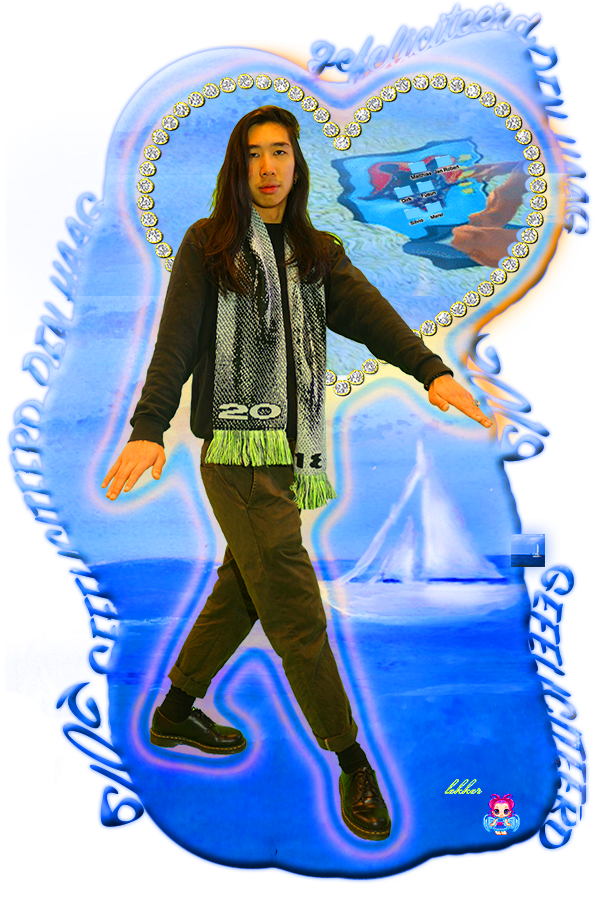

Nuances of the Electronic Eye
"So, Pa. What was all that fleshy function about?"
Nuances of the Electronic Eye
"So, Pa. What was all that fleshy function about?"
Since the invention of time-keeping, we have always had an interesting relationship with the time; specically the future. Prophecies and clairvoyant folklores to nancial risk prediction models and earthquake forecasting, the slow grind of time have prove to be taxing on us diesel monkeys and we are compelled to wonder further into the future without the shackles of present needs. It is an elusive state of being where there is no burden of proof and scenarios are dreamt in perpetuity. The portrayal of such a scenario tend to appeal to mutually shared sets of fundamental human conditions. Trans-generational aspirations, desires and fear are & the ever-eeting language of our projected futures knowing and unknowingly etched, scribbled, painted, recorded. Are these documentations, propagandist tools, delusional tales or semblances of comfort? The collective dream is neither optimistic nor nihilistic. It just is.
In my thesis, I am researching and comparing historical paerns in how we continually portray the future in terms of images and symbolisms. I am fascinated by the possibly repetitive use of visual language in varying formats trying to describe the same fundamental human-centric future.
Click Here for more
In my thesis, I am researching and comparing historical paerns in how we continually portray the future in terms of images and symbolisms. I am fascinated by the possibly repetitive use of visual language in varying formats trying to describe the same fundamental human-centric future.
Click Here for more


Mariam Darchiashvili
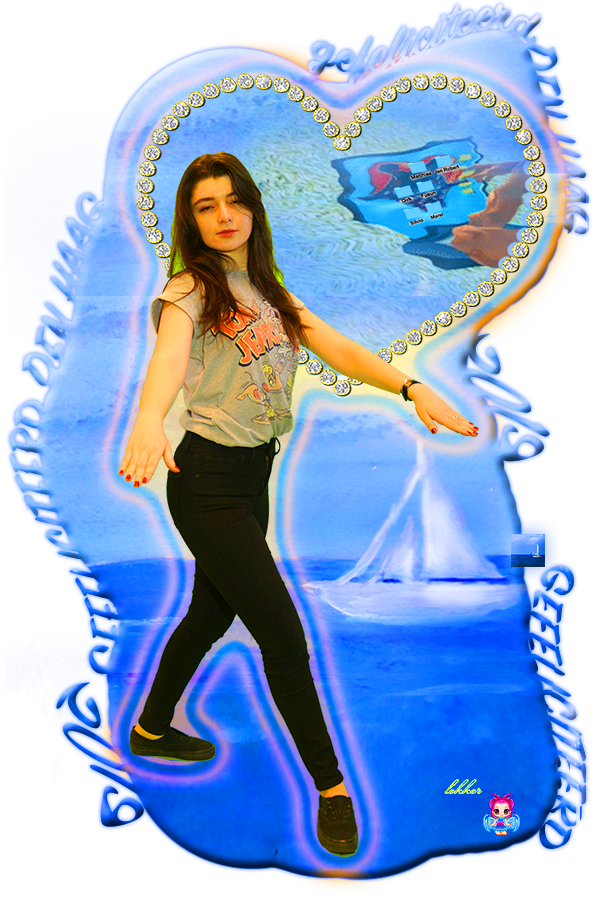

Sterile Dogma
"The schizophrenic sun has an inner night sticking it together" (c) Nick Land
Sterile Dogma
"The schizophrenic sun has an inner night sticking it together" (c) Nick Land
THERE IS NO HIGHEST NUMBER, THERE CAN BE NO FINAL REVOLUTION
“NOCTURNUS” AND ITS EFFECT ON THE HUMAN DEVELOPMENT THROUGH THE VISUAL CULTURE IN THE AGE OF RADICAL ELATION.
Today we are living in the world where fear and doubt are being condemned to the ever-lasting flight down the void. This becomes a reason for us to start denouncing other crucial parts of our lives as non-important ones or as those that are reinforcing fears and insecurities in favour of artificial shelter made of all that successful compensating and striving of today. I see such escapism as an eminently important issue that can have poor fallout for our civilisation’s present and thus - future. This is why I am interested in the topic of nocturnal culture and how dark aesthetics (especially the black image) and in general exposure to fear and dark concepts can influence our cognition and evolution. I strongly believe that such strategy can evoke higher modes of both self and general analysis and bring out the natural curiosity in humans and ability of interpretation, that are now unfortunately put into lethargic sleep.
I seek to re-invigorate a sense of wonder, uncertainty and mystery in life by implementing and emphasising the dark colors, magic, questions with no answers and night. In order to do so, I want to look into history of how and if various parts of Nocturnal Culture were influencing human evolution. And if they had an effect on individuals or masses (both positive and negative) in order to find proving arguments for my belief and be able to present it to our society which is drowning in “positive living bullet journals” and “books of everyday gratefulness” instead of simply turning of the lights and thinking. Along with that, topics of anthropology of fear, darkness and the psychological influence of them onto our cognition will be discussed, concluding with the influence nocturnal culture and esoterism had on the creation of contemporary art and visual culture.
As a strategy I’ve chosen to go from the opposites by destroying the arguments opposing my hypothesis through attempts of defending them. Presented partly through the voice of the main text and partly in form of dialogue extracts this paper is aiming to spark questioning of both sides and proving the absence of absolute. There can be no highest number, as there is only totality and there can be no final revolution as we exist. In such way this thesis is both: me finding artefacts of my beliefs and a manifesto to everything “Nocturnus”: of the night.
Click Here for more
“NOCTURNUS” AND ITS EFFECT ON THE HUMAN DEVELOPMENT THROUGH THE VISUAL CULTURE IN THE AGE OF RADICAL ELATION.
Today we are living in the world where fear and doubt are being condemned to the ever-lasting flight down the void. This becomes a reason for us to start denouncing other crucial parts of our lives as non-important ones or as those that are reinforcing fears and insecurities in favour of artificial shelter made of all that successful compensating and striving of today. I see such escapism as an eminently important issue that can have poor fallout for our civilisation’s present and thus - future. This is why I am interested in the topic of nocturnal culture and how dark aesthetics (especially the black image) and in general exposure to fear and dark concepts can influence our cognition and evolution. I strongly believe that such strategy can evoke higher modes of both self and general analysis and bring out the natural curiosity in humans and ability of interpretation, that are now unfortunately put into lethargic sleep.
I seek to re-invigorate a sense of wonder, uncertainty and mystery in life by implementing and emphasising the dark colors, magic, questions with no answers and night. In order to do so, I want to look into history of how and if various parts of Nocturnal Culture were influencing human evolution. And if they had an effect on individuals or masses (both positive and negative) in order to find proving arguments for my belief and be able to present it to our society which is drowning in “positive living bullet journals” and “books of everyday gratefulness” instead of simply turning of the lights and thinking. Along with that, topics of anthropology of fear, darkness and the psychological influence of them onto our cognition will be discussed, concluding with the influence nocturnal culture and esoterism had on the creation of contemporary art and visual culture.
As a strategy I’ve chosen to go from the opposites by destroying the arguments opposing my hypothesis through attempts of defending them. Presented partly through the voice of the main text and partly in form of dialogue extracts this paper is aiming to spark questioning of both sides and proving the absence of absolute. There can be no highest number, as there is only totality and there can be no final revolution as we exist. In such way this thesis is both: me finding artefacts of my beliefs and a manifesto to everything “Nocturnus”: of the night.
Click Here for more


Bohwa Jang


The Imitation Game
A picture of a pipe isn’t necessarily a pipe, an image of “African fabric” isn’t necessarily authentically [and wholly] African”. -Yinka Shonibare
The Imitation Game
A picture of a pipe isn’t necessarily a pipe, an image of “African fabric” isn’t necessarily authentically [and wholly] African”. -Yinka Shonibare
Cloth is discussed by anthropologists as being a means of cultural, social and personal expression, playing “a vital role in social reproduction through recurring acts of exchange that encourage both cultural continuity and transformation” (Perani and Wolff, 1999).
Everyday, everywhere, the fashion landscape of West Africa is taken over by vivid coloured and bold shaped patterned fabrics produced through wax-resist printing. The history of these clothes and their cultural value is diverse. The mechanised Wax Print cloth apparently signifies Africa however ironically it did not originate in Africa.
Basically, The African Wax Print Fabric started from The Netherlands.To be precise, it originated in Indonesia.In the early 19th , Dutch had colonial interests in Africa and Indonesia. and Vlisco started making and exporting Wax Print fabrics from The Netherlands in the late 1840’s. They first began replicating ethnographic fabrics by making roller printed versions of traditional wax print batiks from Indonesia. After all, The ‘Dutch Wax Print’ is becoming one of identity in West Africa for around 200 years.
However In the last decade the market has been flooded with Chinese Wax Print which is also imitation from Dutch Wax Print. and The imitation Wax Print textiles threaten Vlisco who is main Dutch Wax Print Fabric manufacturer in the Netherlands . Regardless of their background, the origin, Indonesia or Europe and their enormous Chinese imitations, this textiles have become a signifier of West African authenticity. In these fabrics we see an extraordinary fusion of Asian, European and African culture.
A developing Europe exploited Africa to enable the textiles industry out of which the Wax Print trade grew. Now that trade is being used as a tool for exploitation by a developing China. Maybe this is the colonial legacy of the Wax Print in economic and trade terms, ironically one that threatens the positive legacy, which is the new generation of African factories, some of which are part of the responsible actions of post - colonial Holland.
This essay will deal with the ‘Ironic Imitation Cycle’ between Asia - Europe, tracing back to the origin of Wax Print Fabric. Additionally, how a continent could absorb so utterly something so foreign into its own tradition and what meaning are attached to the cloth its users?
Click Here for more
Everyday, everywhere, the fashion landscape of West Africa is taken over by vivid coloured and bold shaped patterned fabrics produced through wax-resist printing. The history of these clothes and their cultural value is diverse. The mechanised Wax Print cloth apparently signifies Africa however ironically it did not originate in Africa.
Basically, The African Wax Print Fabric started from The Netherlands.To be precise, it originated in Indonesia.In the early 19th , Dutch had colonial interests in Africa and Indonesia. and Vlisco started making and exporting Wax Print fabrics from The Netherlands in the late 1840’s. They first began replicating ethnographic fabrics by making roller printed versions of traditional wax print batiks from Indonesia. After all, The ‘Dutch Wax Print’ is becoming one of identity in West Africa for around 200 years.
However In the last decade the market has been flooded with Chinese Wax Print which is also imitation from Dutch Wax Print. and The imitation Wax Print textiles threaten Vlisco who is main Dutch Wax Print Fabric manufacturer in the Netherlands . Regardless of their background, the origin, Indonesia or Europe and their enormous Chinese imitations, this textiles have become a signifier of West African authenticity. In these fabrics we see an extraordinary fusion of Asian, European and African culture.
A developing Europe exploited Africa to enable the textiles industry out of which the Wax Print trade grew. Now that trade is being used as a tool for exploitation by a developing China. Maybe this is the colonial legacy of the Wax Print in economic and trade terms, ironically one that threatens the positive legacy, which is the new generation of African factories, some of which are part of the responsible actions of post - colonial Holland.
This essay will deal with the ‘Ironic Imitation Cycle’ between Asia - Europe, tracing back to the origin of Wax Print Fabric. Additionally, how a continent could absorb so utterly something so foreign into its own tradition and what meaning are attached to the cloth its users?
Click Here for more


Leith Benkhedda
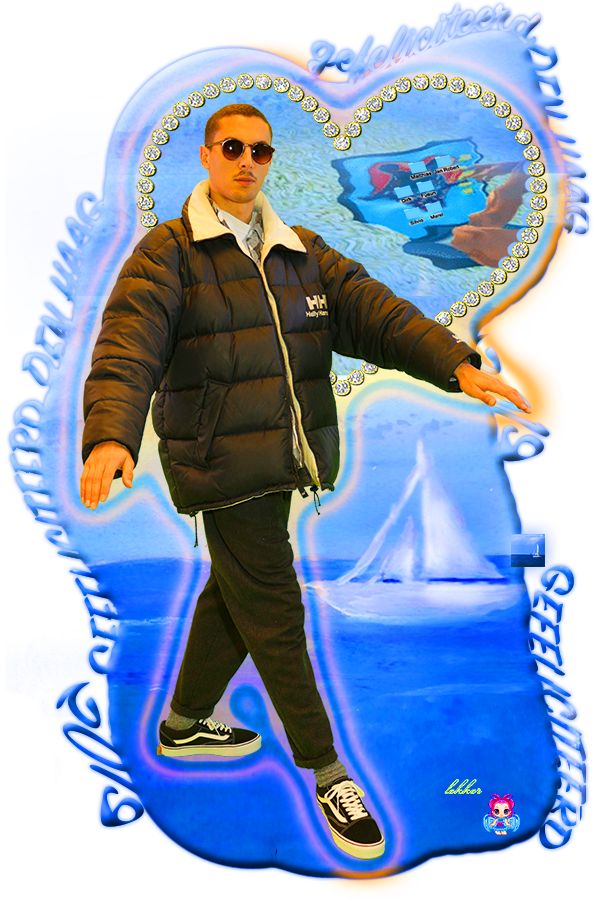

The Screen is Broken
The Screen is Broken
The Screen is Broken
The Screen is Broken
“You feel this very strange force that since the beginning CGI are in competition with the cinematographic and cinematic images. Just like socialism wanted to defeat capitalism, they want to defeat these images and are probably on the verge to defeat them right now” Said Haroun Farocki, German filmmaker and author dead in July 2014.
Computer generated imagery proliferate, a phenomena observable in the realm of politics, advertisement or in the entertainment industry for the past 30 years. Looking back at the past, images have always been playing a major real in how dominant narratives have been built, contributing to a common understanding of the context we are living in.
Facing the raise of computer generated imagery, on it’s way to become the dominant image since the current technologies allows us to simulate every single piece of our environment. Observing the pattern of a feed back loop between representations and their subject through history, we can wonder what realities these technologies will produce in their attempt to achieve a more accurate representations of our world.
Click for more
Computer generated imagery proliferate, a phenomena observable in the realm of politics, advertisement or in the entertainment industry for the past 30 years. Looking back at the past, images have always been playing a major real in how dominant narratives have been built, contributing to a common understanding of the context we are living in.
Facing the raise of computer generated imagery, on it’s way to become the dominant image since the current technologies allows us to simulate every single piece of our environment. Observing the pattern of a feed back loop between representations and their subject through history, we can wonder what realities these technologies will produce in their attempt to achieve a more accurate representations of our world.
Click for more


Céline Hurka


It is not set in stone.
It is not set in stone.
It is not set in stone.
It is not set in stone.
Nothing we will ever make will last forever. We are constantly faced with the loss and decay of all objects and information. We are faced with our own impermanence.
When I, as a graphic designer, work on a project I can get so deeply immersed in the work that I dismiss its short lifespan. Therefore I have asked myself the question how my process and attitude towards my profession would change if I was fully aware of the ephemeral character of any information. By investigating the subject I came across another question, inevitably linked to the former: How should I treat existing material and deal with them in an artistic context? In order to seek conclusions for my own work I started to look where I normally end: The end product. It seemed logical to understand ephemerality by inspecting the various processes that take place after the accomplishment of a work. Consequently, I researched the implications of conserving, archives, reproduction and restoration of information. Simultaneously, I explored their inherent decay, deconstruction and destruction. This research emphasizes the impact of technology, since all of the previously named developments are strongly linked to and dependent on it. This research was relevant to me on a personal level, since I am still at the start of my professional explorations. As a graphic designer and as a type designer I see myself as a translator. I receive, edit and interpret material and transform their meanings into a new narrative within a new context. Therefore, I felt the urge to understand the implications of my actions.
I believe that the topics discussed are crucial to understand in a bigger picture.We are still in the early days of digital technology. Innovations come at an increasing speed which gives us less and less time to reflect on our choices. We cannot predict what is yet to come and for how long we will be around. This is precisely why we need to develop an understanding of the production of cultural knowledge. How we produce and consume information shapes the way we construct the world. We shape the way we view “reality” and ultimately the way we understand our “self”.
Click Here for more
When I, as a graphic designer, work on a project I can get so deeply immersed in the work that I dismiss its short lifespan. Therefore I have asked myself the question how my process and attitude towards my profession would change if I was fully aware of the ephemeral character of any information. By investigating the subject I came across another question, inevitably linked to the former: How should I treat existing material and deal with them in an artistic context? In order to seek conclusions for my own work I started to look where I normally end: The end product. It seemed logical to understand ephemerality by inspecting the various processes that take place after the accomplishment of a work. Consequently, I researched the implications of conserving, archives, reproduction and restoration of information. Simultaneously, I explored their inherent decay, deconstruction and destruction. This research emphasizes the impact of technology, since all of the previously named developments are strongly linked to and dependent on it. This research was relevant to me on a personal level, since I am still at the start of my professional explorations. As a graphic designer and as a type designer I see myself as a translator. I receive, edit and interpret material and transform their meanings into a new narrative within a new context. Therefore, I felt the urge to understand the implications of my actions.
I believe that the topics discussed are crucial to understand in a bigger picture.We are still in the early days of digital technology. Innovations come at an increasing speed which gives us less and less time to reflect on our choices. We cannot predict what is yet to come and for how long we will be around. This is precisely why we need to develop an understanding of the production of cultural knowledge. How we produce and consume information shapes the way we construct the world. We shape the way we view “reality” and ultimately the way we understand our “self”.
Click Here for more


Linsey Dolleman
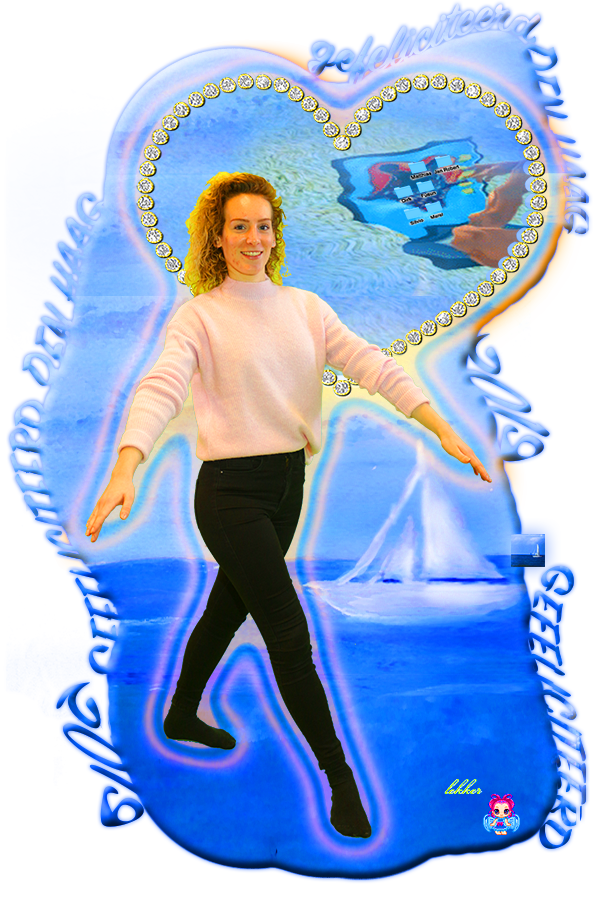

At Arm's Length
At Arm's Length
At Arm's Length
At Arm's Length
“A photograph that one has taken of oneself, typically with a smartphone or webcam and uploaded to a social media website.” In this thesis I am focussing on selfies. It is something that I always have thought is really interesting and weird. One could argue about whether selfies are actually new or old. Think about self-portraits for instance. People have been producing them for centuries, with the medium and publication format changing. Self-portraits are far less sponta neous and casual than a selfie is. The new genre isn’t dominated by artists, but by amateurs.
The selfie is a great example of how once elite pursuits have become a global visual culture. At one time, self-portraits were the preserve of a highly skilled few, now anyone with a phone camera can make one.
I also reflect on the history of narcissism through stories that have been told for centuries. For instance, the Greek mythology Narcissus. He was known for his beauty. When he saw an image so beautiful in the water, he fell in love with it he was unable to leave the beauty of his own reflection. In Snow White and the Seven Dwarfs the evil Queen speaks the famous line: “Mirror, mirror, on the wall – who is the fairest one of all?”. In both these stories the reflection of the self plays an important role. Not only does the surface reflect the Self, it is also a possibility of coming to know the Self. Today’s mirror could be our front camera on our phone.
Superbia, pride/vanity, is one of the seven deadly sins. It is almost on every list the original and most serious of all sins. Pride is identifies as dangerously corrupt selfishness. I started to wonder about the deeper meaning of these deadly sins, old mythology and childhood fairy tale. Why did they warn us about the reflection of the self and narcissism and selfi(e)shness?
Click Here for more
The selfie is a great example of how once elite pursuits have become a global visual culture. At one time, self-portraits were the preserve of a highly skilled few, now anyone with a phone camera can make one.
I also reflect on the history of narcissism through stories that have been told for centuries. For instance, the Greek mythology Narcissus. He was known for his beauty. When he saw an image so beautiful in the water, he fell in love with it he was unable to leave the beauty of his own reflection. In Snow White and the Seven Dwarfs the evil Queen speaks the famous line: “Mirror, mirror, on the wall – who is the fairest one of all?”. In both these stories the reflection of the self plays an important role. Not only does the surface reflect the Self, it is also a possibility of coming to know the Self. Today’s mirror could be our front camera on our phone.
Superbia, pride/vanity, is one of the seven deadly sins. It is almost on every list the original and most serious of all sins. Pride is identifies as dangerously corrupt selfishness. I started to wonder about the deeper meaning of these deadly sins, old mythology and childhood fairy tale. Why did they warn us about the reflection of the self and narcissism and selfi(e)shness?
Click Here for more


Wietske Nutma
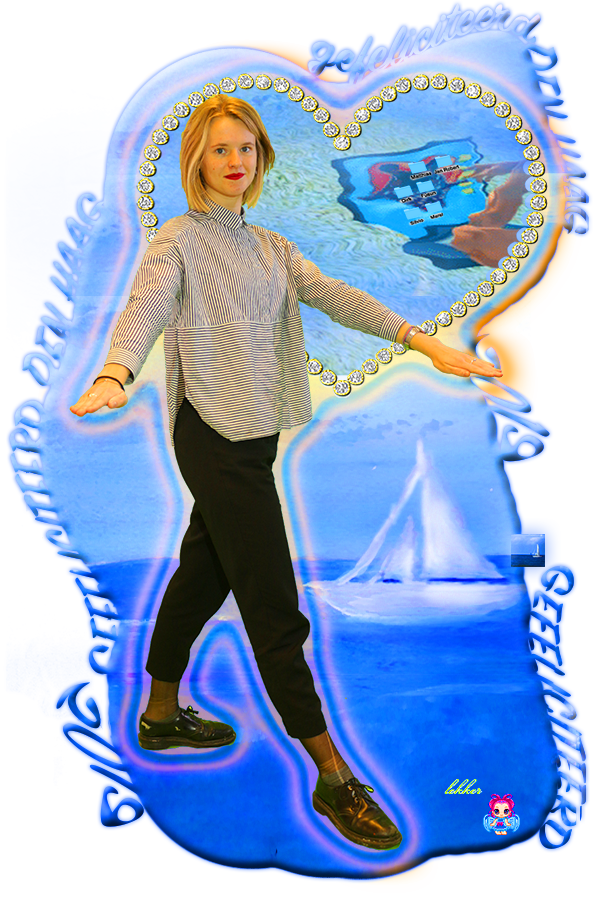

(Dis)[em-bod-ee-muh nt] [uhv] [lang-gwij]
"in search of a true writing of the body"
(Dis)[em-bod-ee-muh nt] [uhv] [lang-gwij]
"in search of a true writing of the body"
Did you ever had that feeling when texting someone, sending an email or some other type of message that you do not know how to put into words what you want to say. You are worried that the reader will interpret it in a different way than you intended, but there are just no other words to put it, to make it feel more right. Suddenly you wish you could be there, with him/her, so that he/she could see your face and listen to how you would say it, how your body would be aiding you in your words. Not only for the receiver to understand you better but also to instantly see the reaction, the emotions playing over the face, the way he/she holds his/her body.
These signals we provide help to mediate our intention when words alone do not suffice. We can always rely on our intonation, facial expression and bodily movements to change the tone of the words that we use. This non-verbal communication plays the most important part in our day-to-day contact.
Yet the written word does not support this language. It is characterised by its restrictions, its soundless, has a fixed form, and it is flat, two-dimensional. It is a system in which we cannot (yet) be bodily present. How could one see four dimensions at once? How do you catch those shifting and subtle changes of expression in the body? The question arises how words can accurately convey their meaning if the body is not present and if they in fact can at all. They are a beautiful attempt but scoring the moving, sounding body in 4 dimensions remains elusive.
This thesis argues, based on an analysis of the unique languages of both the body and the word, that a void arose in communication as the language of our body continued to get more and more lost in translation. The development of technology over the last hundred years only enforces this loss, this disembodiment. In contrast, it examines the manner in which the human body is captured and depicted through different (more artistic) writing methods, that try to break through all the aforementioned limitations of language, in search of a true writing of the body. Fiona Banners’s Perfomance Nudes and Christine sun Kim’s drawings among other things will help us to see the body as more of a communicative tool, one that escapes the grasp of words.
Through them we can discover how this void in communication not only has its negative qualities but how it in fact can be used as a (artistic) tool from which new methods can emerge. Methods where meaning can occur across linguistic understanding.
Click Here for more
These signals we provide help to mediate our intention when words alone do not suffice. We can always rely on our intonation, facial expression and bodily movements to change the tone of the words that we use. This non-verbal communication plays the most important part in our day-to-day contact.
Yet the written word does not support this language. It is characterised by its restrictions, its soundless, has a fixed form, and it is flat, two-dimensional. It is a system in which we cannot (yet) be bodily present. How could one see four dimensions at once? How do you catch those shifting and subtle changes of expression in the body? The question arises how words can accurately convey their meaning if the body is not present and if they in fact can at all. They are a beautiful attempt but scoring the moving, sounding body in 4 dimensions remains elusive.
This thesis argues, based on an analysis of the unique languages of both the body and the word, that a void arose in communication as the language of our body continued to get more and more lost in translation. The development of technology over the last hundred years only enforces this loss, this disembodiment. In contrast, it examines the manner in which the human body is captured and depicted through different (more artistic) writing methods, that try to break through all the aforementioned limitations of language, in search of a true writing of the body. Fiona Banners’s Perfomance Nudes and Christine sun Kim’s drawings among other things will help us to see the body as more of a communicative tool, one that escapes the grasp of words.
Through them we can discover how this void in communication not only has its negative qualities but how it in fact can be used as a (artistic) tool from which new methods can emerge. Methods where meaning can occur across linguistic understanding.
Click Here for more


Esther Vane


⚧ and the enchantment of the tiny mirror
⚧ and the enchantment of the tiny mirror
⚧ and the enchantment of the tiny mirror
⚧ and the enchantment of the tiny mirror
By writing a fictional story about a place called ⚧ I want to take the opportunity to question the role of utopian thinking within self-organised, (non-)institutional art education. The suggestions on how art can be taught best easily blur the line between reality and fantasy and enables a different realm of understanding and existence. It enables us to enter a non-space, a space of emplacement, the utopian space.
I will take the reader on a guided tour through the imagined structure of The Department Of A Playful Beginning, The Department Of Social Dreamers and The Department Of Conflict. These departments are explored throughout the stories of several students and their reflection on topics such as play, collectivity and plea for conflict.
Click Here for more
I will take the reader on a guided tour through the imagined structure of The Department Of A Playful Beginning, The Department Of Social Dreamers and The Department Of Conflict. These departments are explored throughout the stories of several students and their reflection on topics such as play, collectivity and plea for conflict.
Click Here for more


Kylièn Sarino Bergh
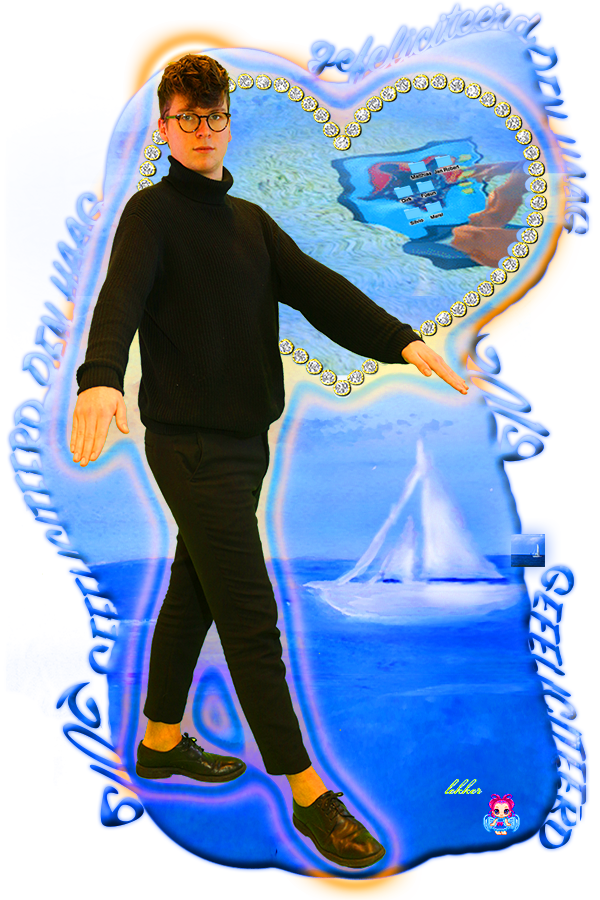

Corona Civica
No other crown is a more accurate and superior representation of victory than the golden laurel wreath.
Corona Civica
No other crown is a more accurate and superior representation of victory than the golden laurel wreath.
Corona Civica is an analysis of symbolic value through the case of the laurel wreath, the symbol of victory. The amplification explores the mythological origin, historical value, transition, meaning and contemporary application. While a modern conception of victory seems to be peaceful and societal, the mythological narrative and the historical perception provide a rather violent definition of victory. It is the glory of the individual through domination and conquest. The symbol underwent a transition both from individual to collective and from physical object to visual representation.
Click Here for more
Click Here for more


Kerrin Go
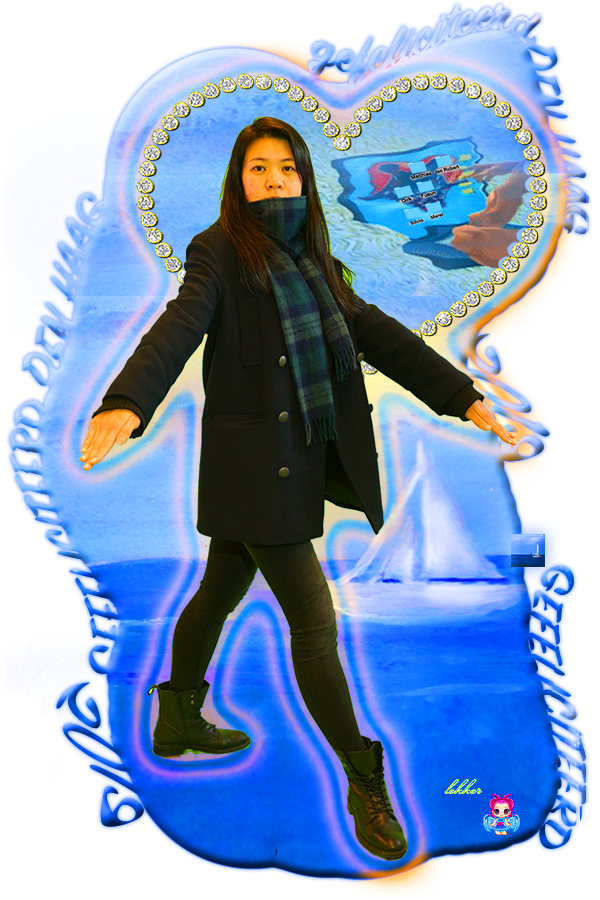

The Small Space of a Pause
“Everyone was their own memory theatre“
The Small Space of a Pause
“Everyone was their own memory theatre”
Over the years at the academy I have been questioning the nature of my practice. I use words like intuitive, rhythm, recognition and sincerity to describe and justify my processes. Visually, my work tends towards the abstract side. The minimal usage of words to pinpoint what it is that I am actually creating, makes the work even less transparent and enables me to linger in this comfortable unknowing haze. Now, at the end of the four year programme I realize I’ve turned the whole experience into one ongoing personal project with no beginning and no ending. Despite the personal character, I have no clear understanding of my methods and my body of work. The Memory Theatre has created a space for me to overwrite my experiences in order to get more clarity.
The original Memory Theatre constructed by Giulio Camillo is shaped like a Vitruvian amphitheatre. The area usually taken up by the audience is reserved for memories. The viewer takes center stage, facing the auditorium. In this setting memories taken out of their original context (the original experience), have the potential to interact with each other. Spaces, previously invisible, therefore become visible. And additional knowledge can be obtained due to a different time and space.
Despite its original construct, a Memory Theatre is in essence a mnemonic tool with the the ability to appear in any shape or form. Everyone is in fact their own Memory Theatre. My Memory Theatre, visualized, appears as an ocean, or a pool containing the entire constellation of my memories. I imagine the transition between sea and sky to be non-existent. In the Memory Theatre there are no rules. I consider it a space of potential where The Drifter, a persona, I identity with, is in its natural habitat. The sum of all my memories placed within this space should allow me to discover something I hadn’t been aware of before.
My thesis, another space of potential, is a verbal enactment of my Memory Theatre. By overwriting my experiences of the last four years, I’ve attempted to get a better understanding of my practice. The freedom, the Memory Theatre provides, allows me to place my work next to everything I consider relevant. Including my experiences outside of and prior to the academy. Contrary to the no rules character of the Memory Theatre, a thesis is still a written work and the act of overwriting is anything but undiscriminating. The merging of these two elements has given me new insights into my own practice.
Click Here for more
The original Memory Theatre constructed by Giulio Camillo is shaped like a Vitruvian amphitheatre. The area usually taken up by the audience is reserved for memories. The viewer takes center stage, facing the auditorium. In this setting memories taken out of their original context (the original experience), have the potential to interact with each other. Spaces, previously invisible, therefore become visible. And additional knowledge can be obtained due to a different time and space.
Despite its original construct, a Memory Theatre is in essence a mnemonic tool with the the ability to appear in any shape or form. Everyone is in fact their own Memory Theatre. My Memory Theatre, visualized, appears as an ocean, or a pool containing the entire constellation of my memories. I imagine the transition between sea and sky to be non-existent. In the Memory Theatre there are no rules. I consider it a space of potential where The Drifter, a persona, I identity with, is in its natural habitat. The sum of all my memories placed within this space should allow me to discover something I hadn’t been aware of before.
My thesis, another space of potential, is a verbal enactment of my Memory Theatre. By overwriting my experiences of the last four years, I’ve attempted to get a better understanding of my practice. The freedom, the Memory Theatre provides, allows me to place my work next to everything I consider relevant. Including my experiences outside of and prior to the academy. Contrary to the no rules character of the Memory Theatre, a thesis is still a written work and the act of overwriting is anything but undiscriminating. The merging of these two elements has given me new insights into my own practice.
Click Here for more


Louis Braddock Clarke
![]()
"Unfolding The Ether:
A Language of Electromagnetic & Aesthetic Transductions"
"a new arena can be redrawn through dowsing the in-between heavens via an electro-sensitive perception"
Through the technical production of space, both material and non-material mechanisms adjust the ways of listening and understanding a positioning of self. The focus of this paper draws the reader to the non-material and the influences, sensitivities and aesthetic re-adjustments towards the electro magnetic field. Often a place of contemplation, the known sky has never been a transparent landscape but a Work in progressively stacking carrier of information and noise. Therefore, alluding to an ‘electronic sky’ that takes the name of The Ether; a hybrid place holding inter-dimensional qualities is evidenced. This is a site of growing heritage, broadcasting thecomprehensive data sets of the ancient world and the presentworld while presenting the co-ordinates of the next world.
Through outlining both the artistic and scientific measurements of invisible and meta qualities. Through the act of extending the human senses and being open to a geo-psychic realm, a question arises of a new visual cartography of the world we navigate. Through transduction we can detach from being spectators, routine consumers or technicians and shift towards active excavators of this immortal noise in the sky.
Click Here for more
Through outlining both the artistic and scientific measurements of invisible and meta qualities. Through the act of extending the human senses and being open to a geo-psychic realm, a question arises of a new visual cartography of the world we navigate. Through transduction we can detach from being spectators, routine consumers or technicians and shift towards active excavators of this immortal noise in the sky.
Click Here for more

Rully Irawan
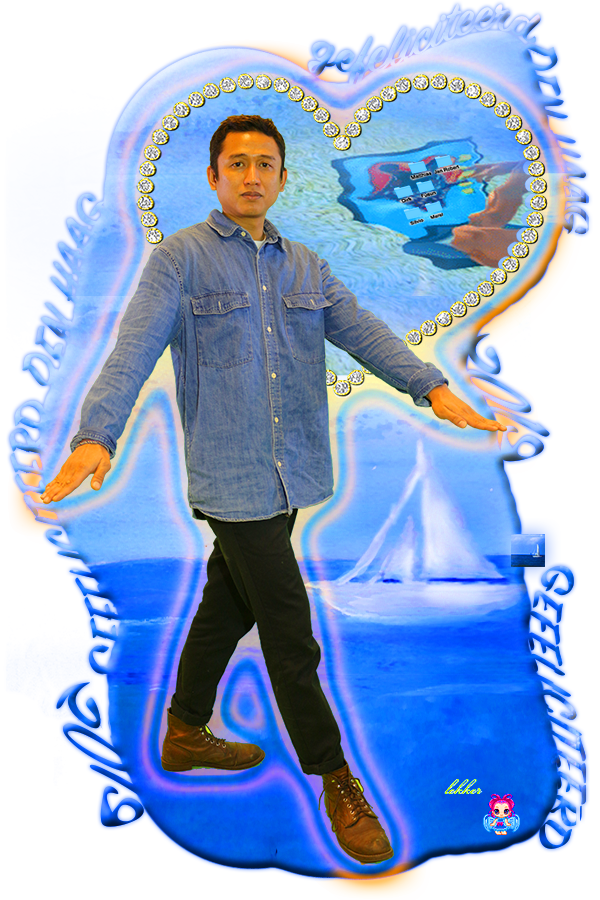

Hidden Curriculum: The invisible structures inside art school in Netherlands
Hidden Curriculum: The invisible structures inside art school in Netherlands
Hidden Curriculum: The invisible structures inside art school in Netherlands
Hidden Curriculum: The invisible structures inside art school in Netherlands
The Virtue of tolerance
Is through the exercise of tolerance
That I discover the possibility
Of doing things and learning different things with different people
Being tolerant is not a question of being naïve
On the contrary it is a duty to be tolerant
An ethical duty, a historical duty, a political duty
But it does not demand that I lose my personality
As said by Paulo Freire on his last public interview for literacy.org in 1996 (LiteracyDotOrg & YouTube, 2009)
The subject of my research is the invisible sets of structure that are overlooked inside the environment of art education in the Netherlands. How these hidden sets of rules are actually the major factor that is determining the development process inside the journey of finding “originality” for students as myself within the graphic design education. Through this project, I am investigating invisible or hidden sets of standards among students at art schools in the Netherlands and in graphic design education in general. I want to take it to the surface and furthermore, I am comparing this research to my own experiences as a student at KABK. In my project I am looking for relevant empirical data (i.e. articles, papers, etc.) generate my own data in collaboration with relevant participants and make a narrative story based on my own experiences. My overall research question in this project is concerned with how hidden sets of standards/ curriculum among students might affect the individuals creative process and possible lead to similarities or trend that will affect the individuals own identity in terms of graphic design. My goal is trying to pull these invisibles to the surface, put it on the table so we can realize and analyse them to reflect on them, make use of them or maybe even modify them for the better.
Click Here for more
Is through the exercise of tolerance
That I discover the possibility
Of doing things and learning different things with different people
Being tolerant is not a question of being naïve
On the contrary it is a duty to be tolerant
An ethical duty, a historical duty, a political duty
But it does not demand that I lose my personality
As said by Paulo Freire on his last public interview for literacy.org in 1996 (LiteracyDotOrg & YouTube, 2009)
The subject of my research is the invisible sets of structure that are overlooked inside the environment of art education in the Netherlands. How these hidden sets of rules are actually the major factor that is determining the development process inside the journey of finding “originality” for students as myself within the graphic design education. Through this project, I am investigating invisible or hidden sets of standards among students at art schools in the Netherlands and in graphic design education in general. I want to take it to the surface and furthermore, I am comparing this research to my own experiences as a student at KABK. In my project I am looking for relevant empirical data (i.e. articles, papers, etc.) generate my own data in collaboration with relevant participants and make a narrative story based on my own experiences. My overall research question in this project is concerned with how hidden sets of standards/ curriculum among students might affect the individuals creative process and possible lead to similarities or trend that will affect the individuals own identity in terms of graphic design. My goal is trying to pull these invisibles to the surface, put it on the table so we can realize and analyse them to reflect on them, make use of them or maybe even modify them for the better.
Click Here for more


Katsiaryna Banar
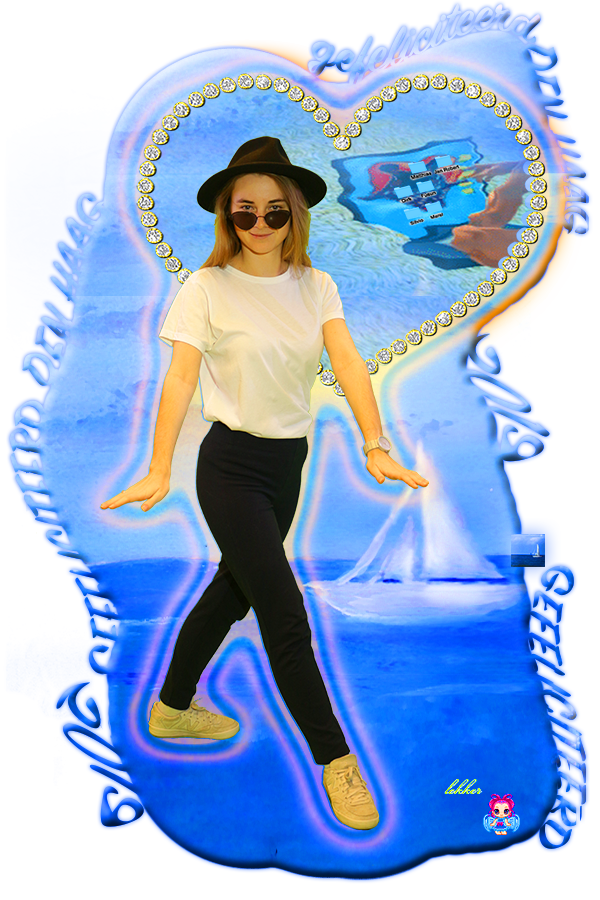

Between the reality and the invention
Balkans had not existed, they would have been invented”
Between the reality and the invention
Balkans had not existed, they would have been invented”
A balcony, unlike other similar structures such as terrace, loggia or street in the sky, is cellular and isolated, yet it provides the capacity to act and structure meaning in a given environment. A balcony has a vivid hierarchy and vertical position, which states the elevation of one over another: it gives a choice for the one on the balcony of where and how to be seen and creates hierarchy between the observer and the observed scene that is the representation of power.
In this thesis, the dominant power is analyzed through the perspective of the spatial metaphor of verticality in order to understand how the constructed meaning can both shape and be shaped by the perspective, social relations and interpretations.
In order to do so, the balcony is examined on different levels such as etymological, physical, symbolical, and looked through the prism of the Balkans as they both share the common principles in their etymologies and the ways in which they are culturally constructed. The balcony hence is a construction, it is a cultural product. Balconies have different meanings, altitudes, representations, and therefore provide the possibility for different ways of reading the balcony. Its meanings are created rather than given. Thus, this thesis is a reading of the balcony.
Click Here for more
In this thesis, the dominant power is analyzed through the perspective of the spatial metaphor of verticality in order to understand how the constructed meaning can both shape and be shaped by the perspective, social relations and interpretations.
In order to do so, the balcony is examined on different levels such as etymological, physical, symbolical, and looked through the prism of the Balkans as they both share the common principles in their etymologies and the ways in which they are culturally constructed. The balcony hence is a construction, it is a cultural product. Balconies have different meanings, altitudes, representations, and therefore provide the possibility for different ways of reading the balcony. Its meanings are created rather than given. Thus, this thesis is a reading of the balcony.
Click Here for more

